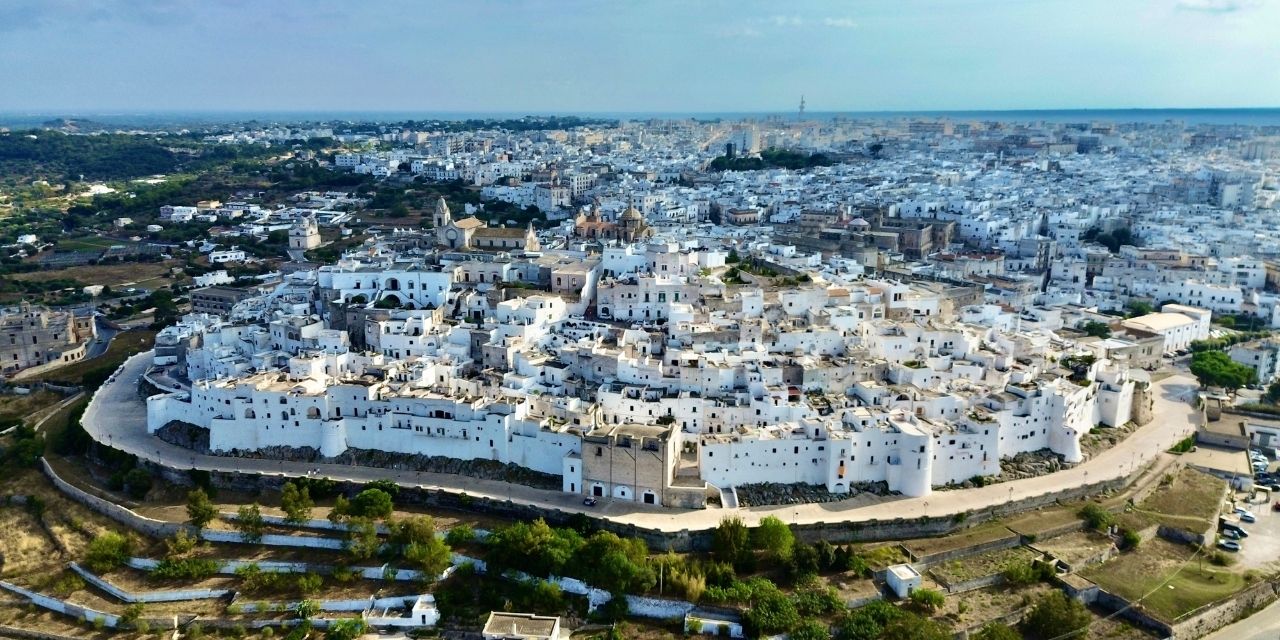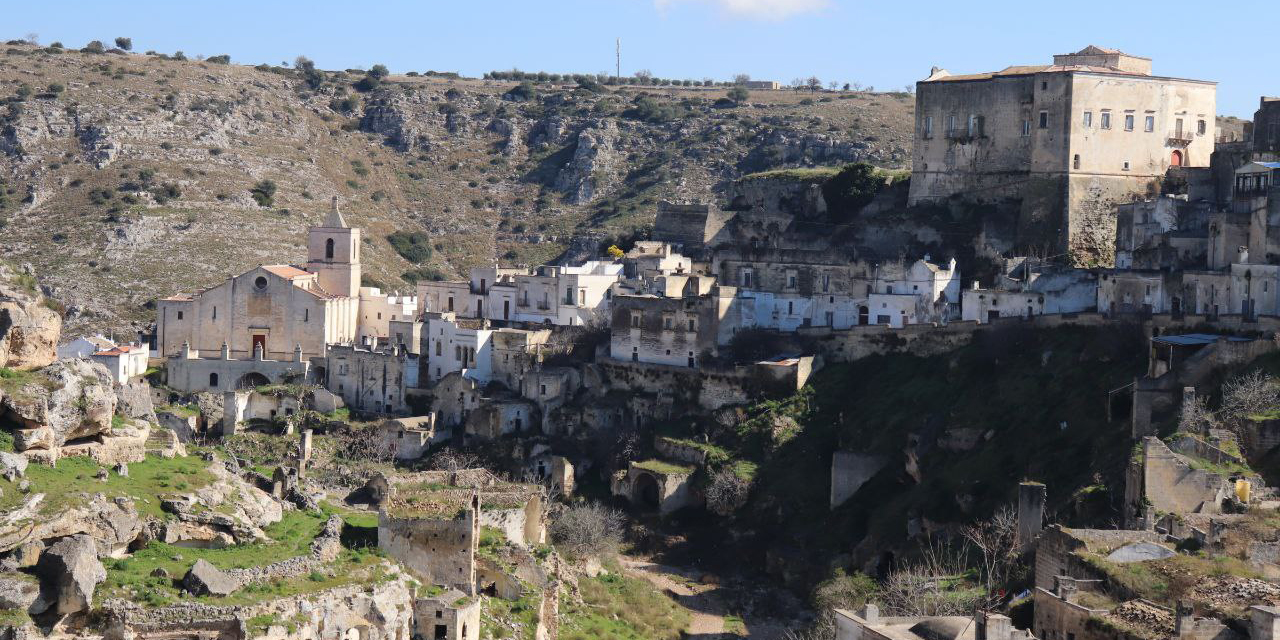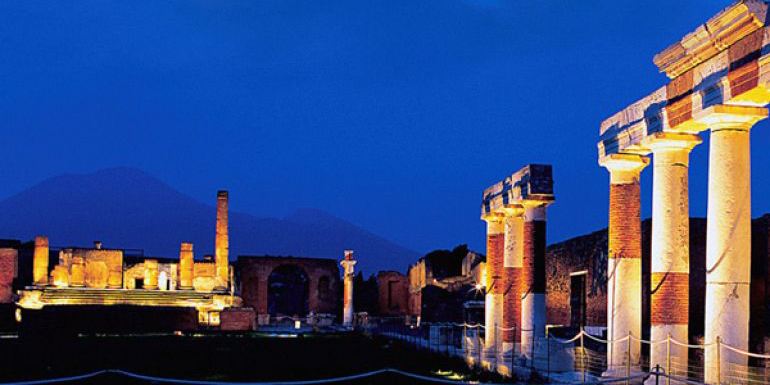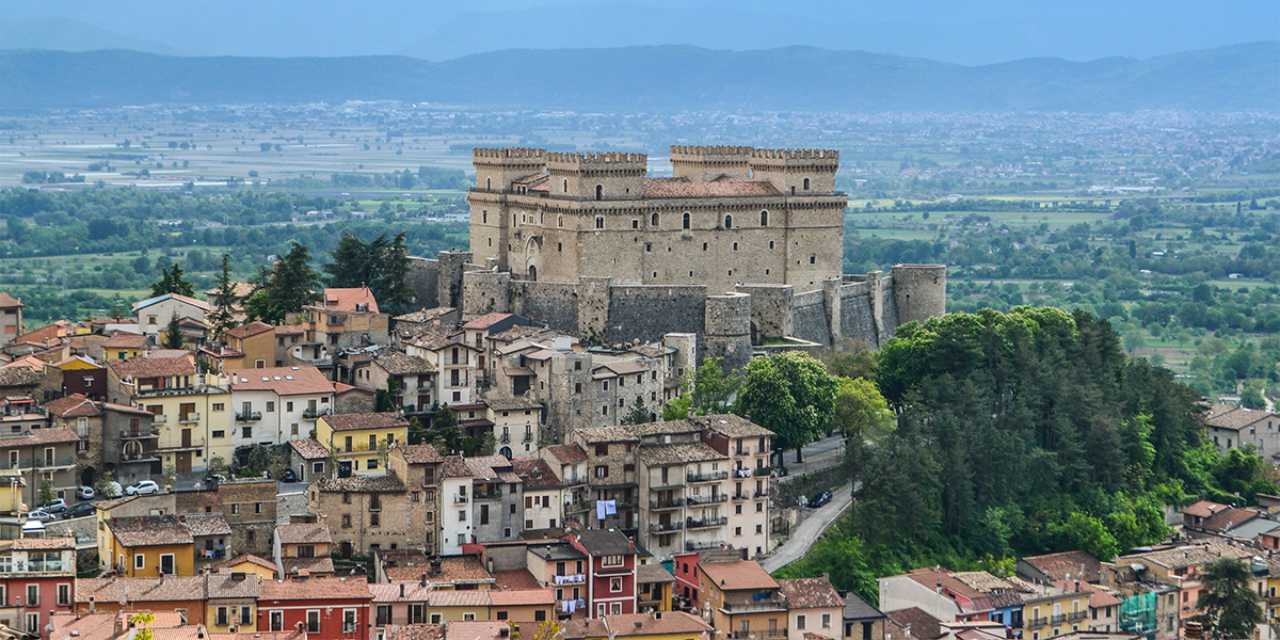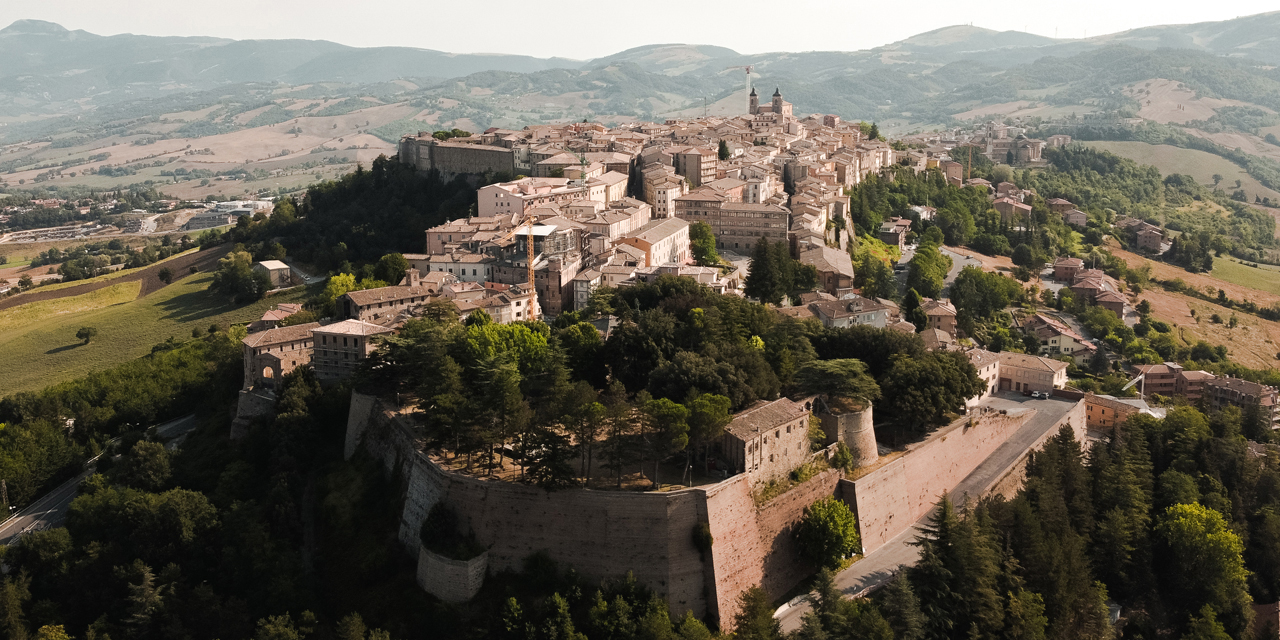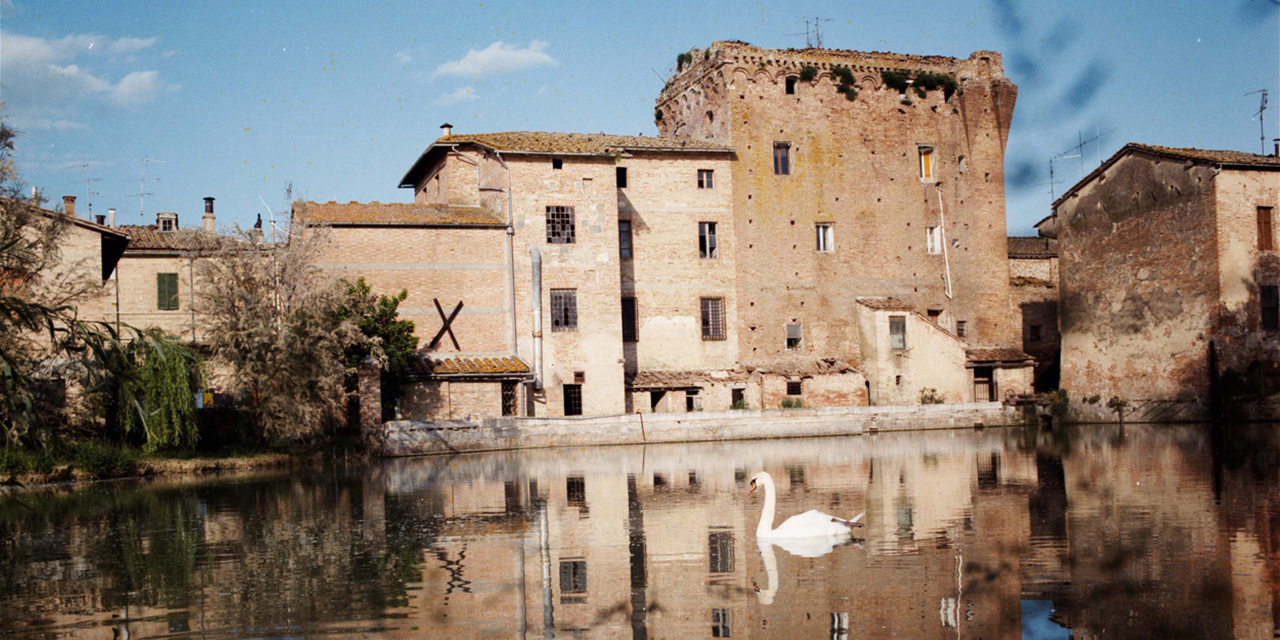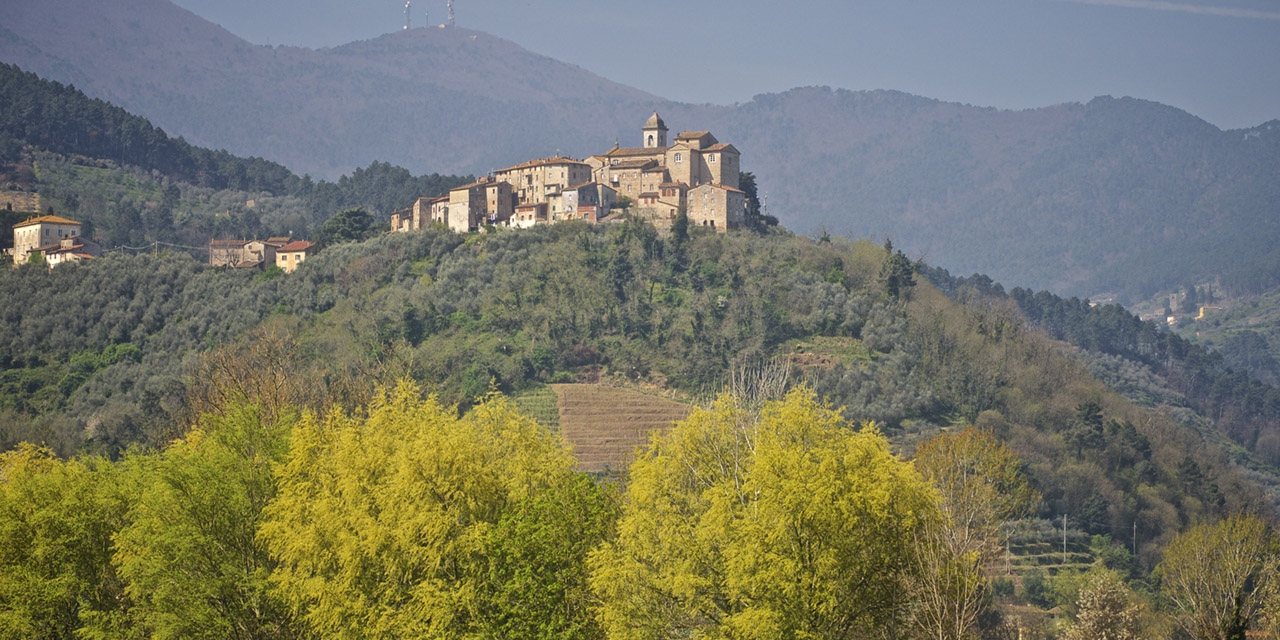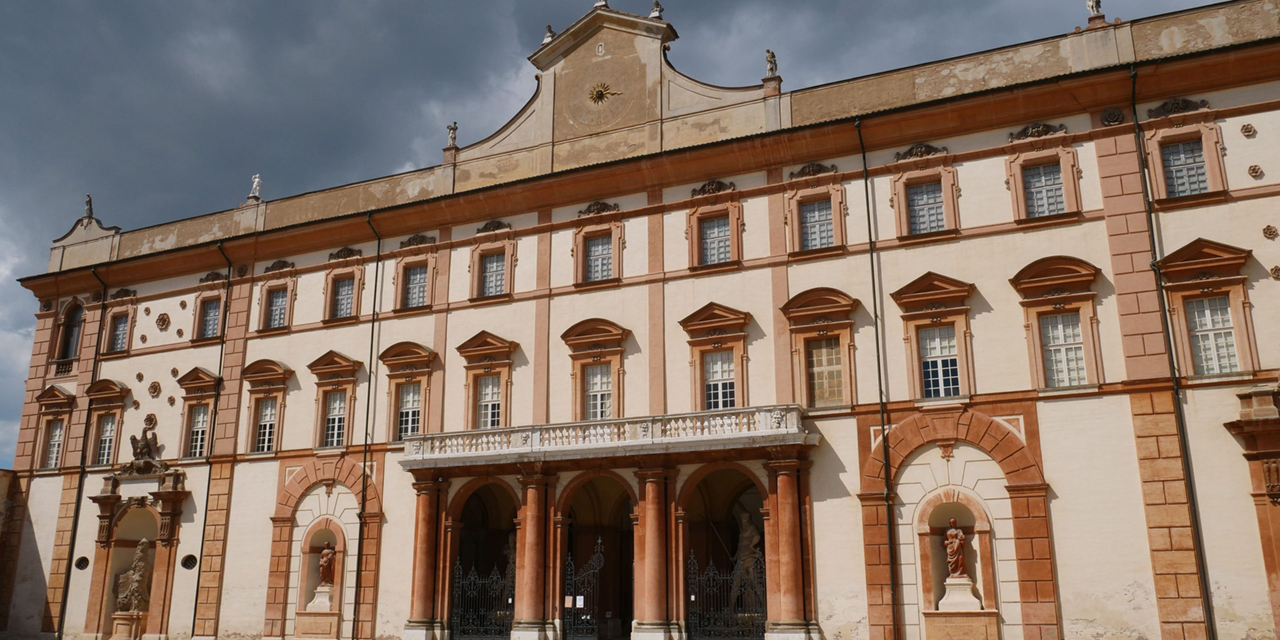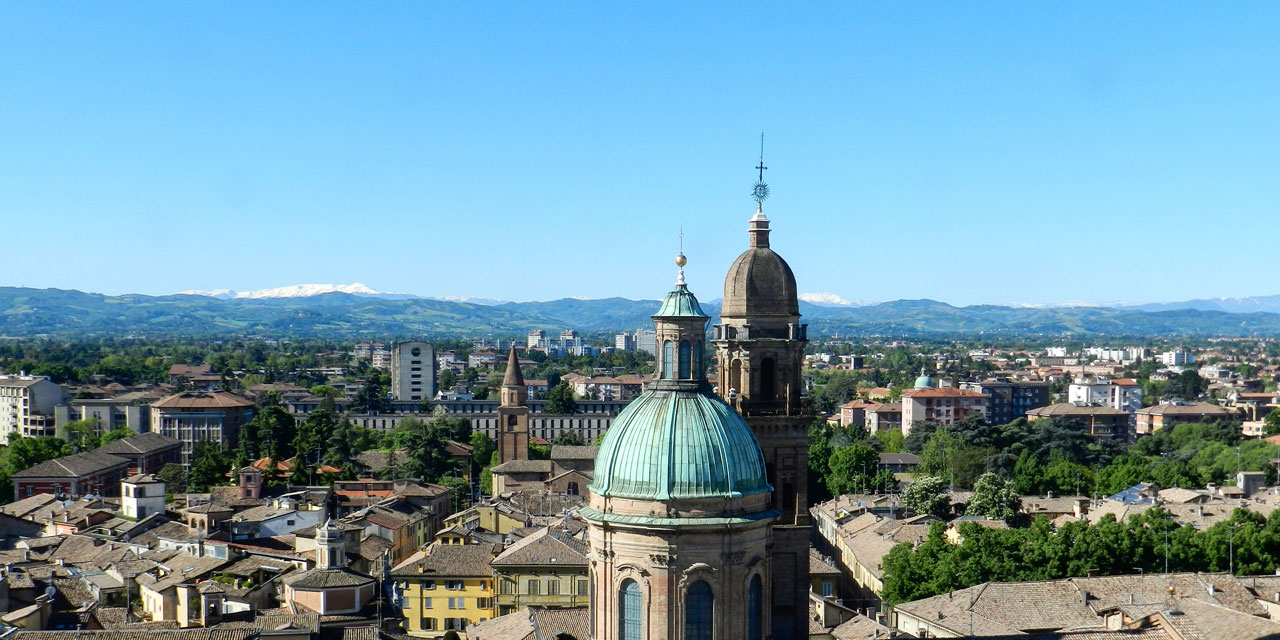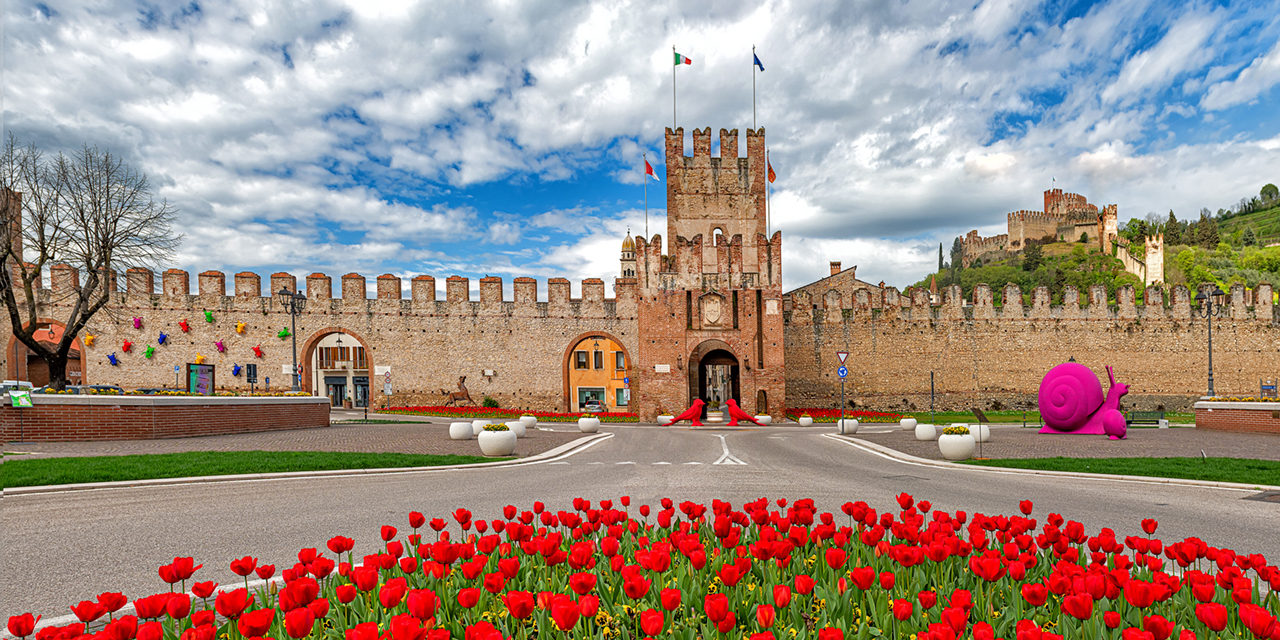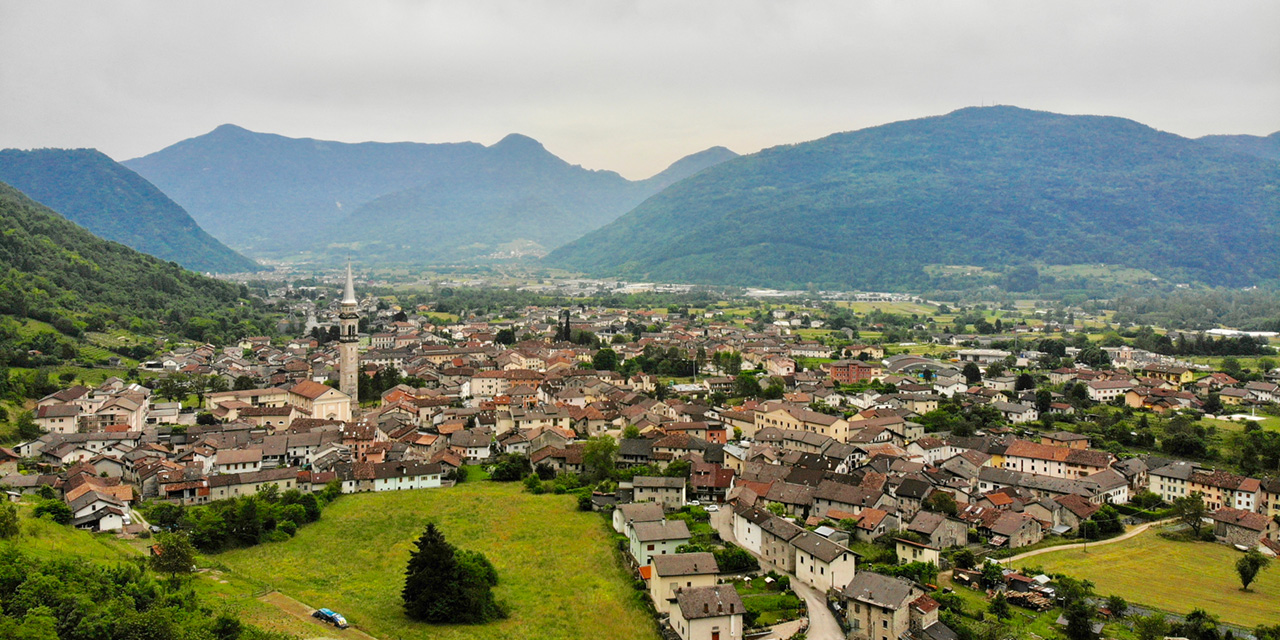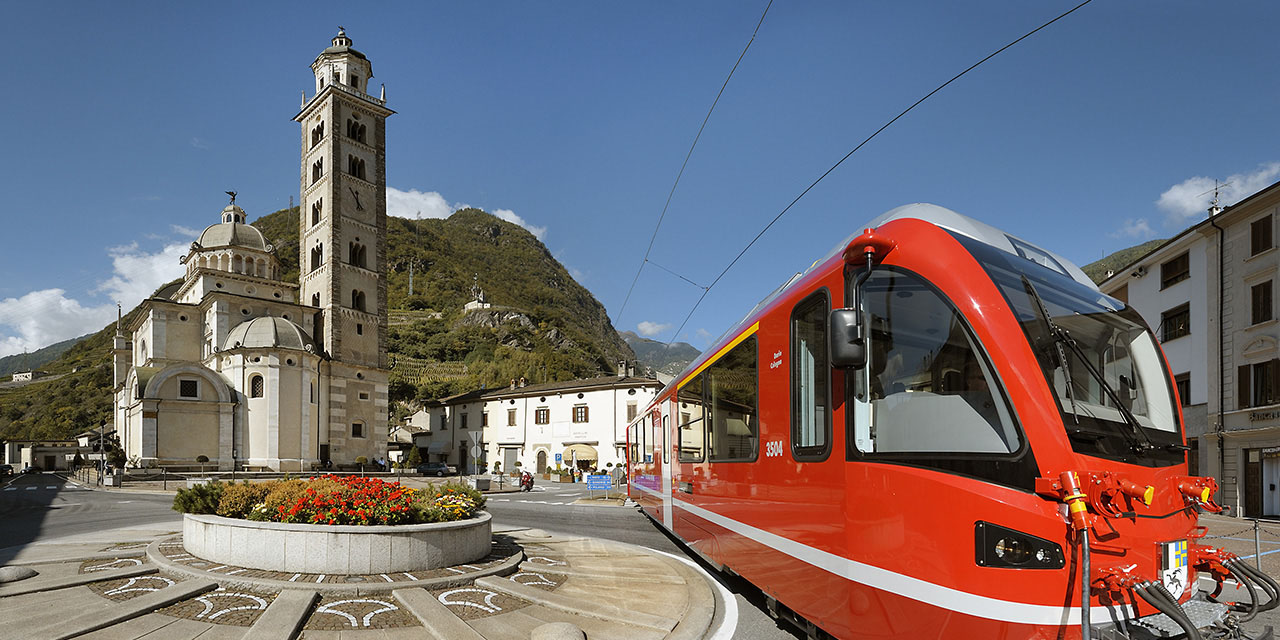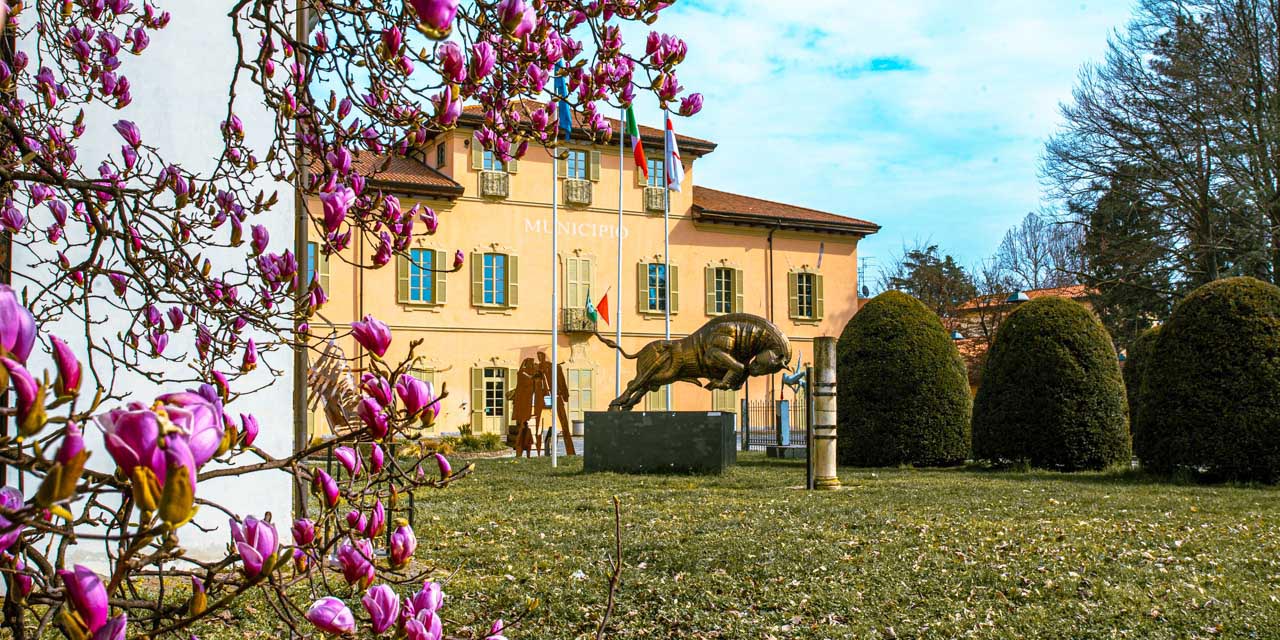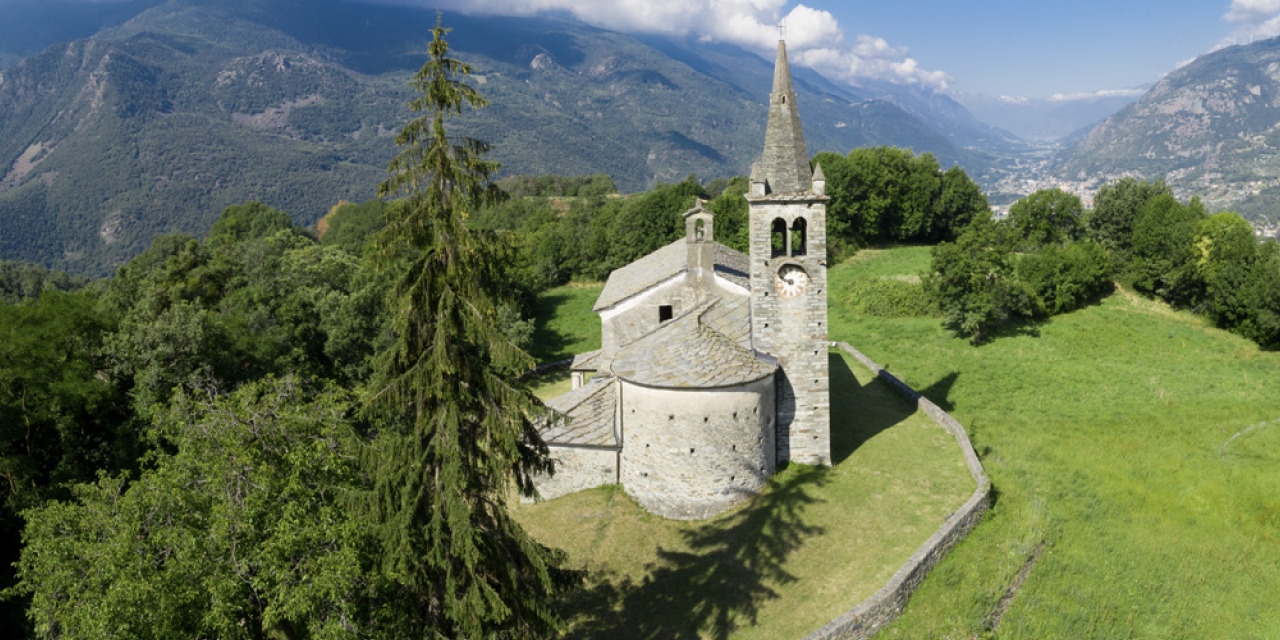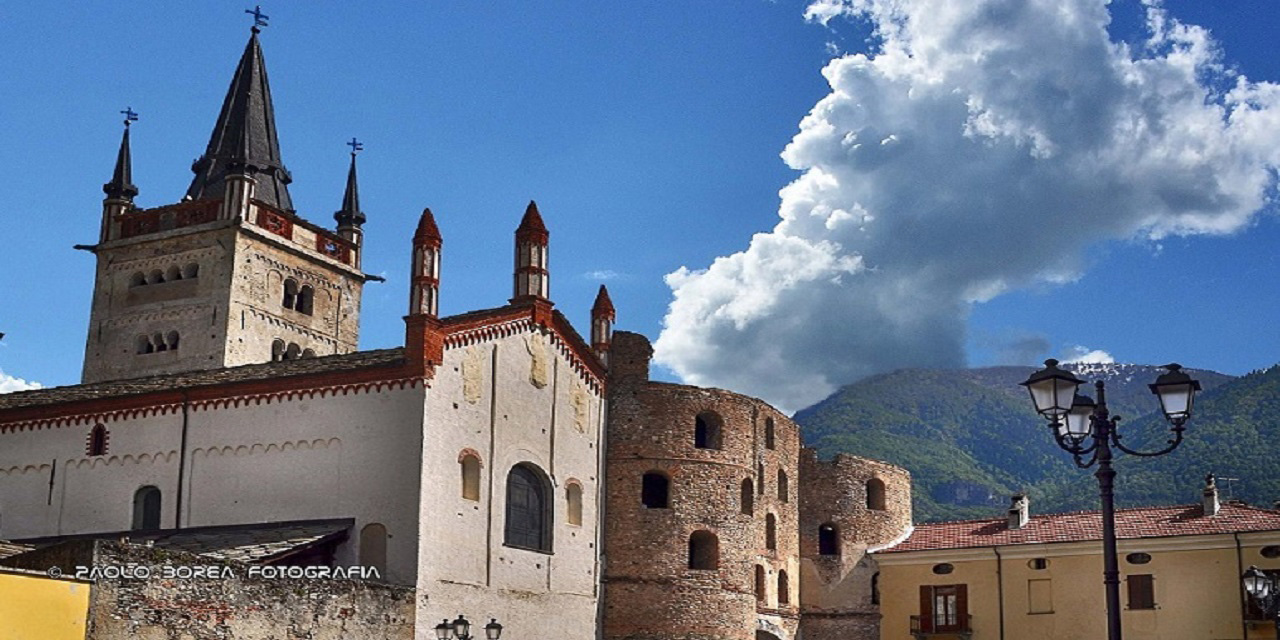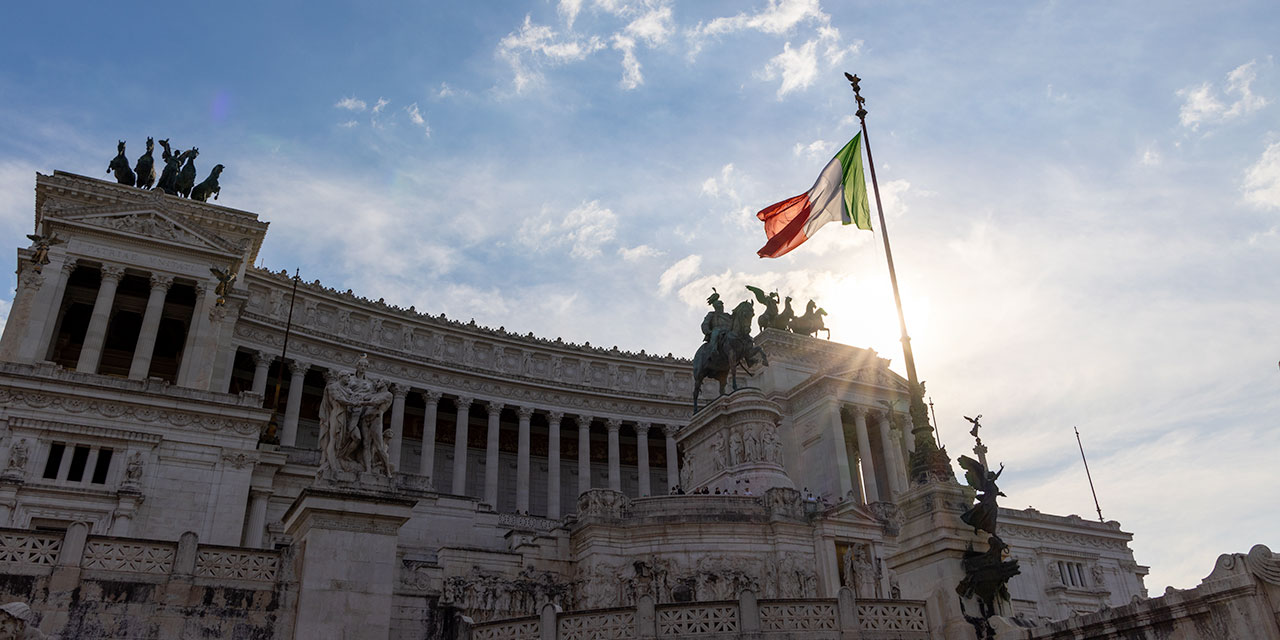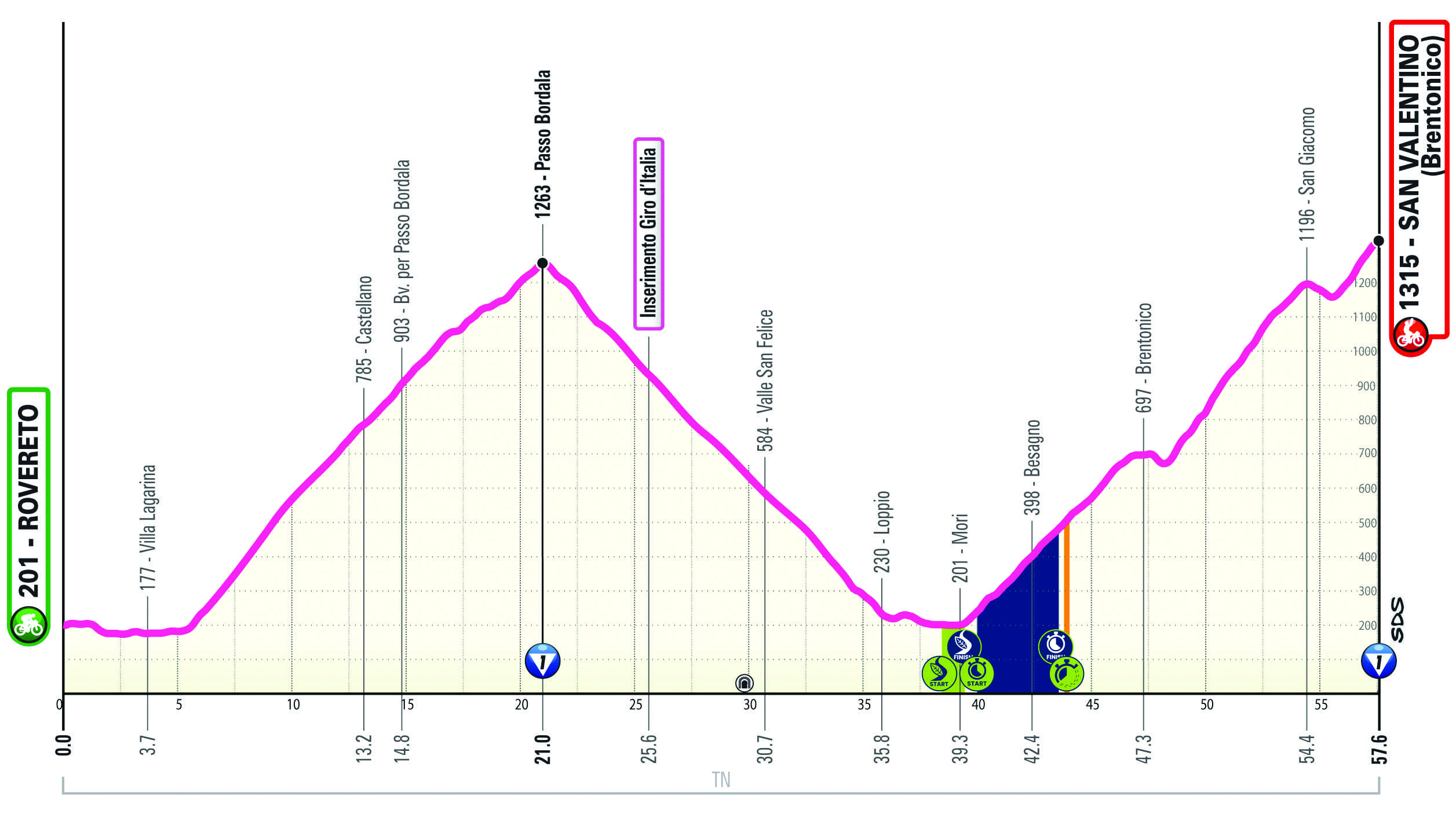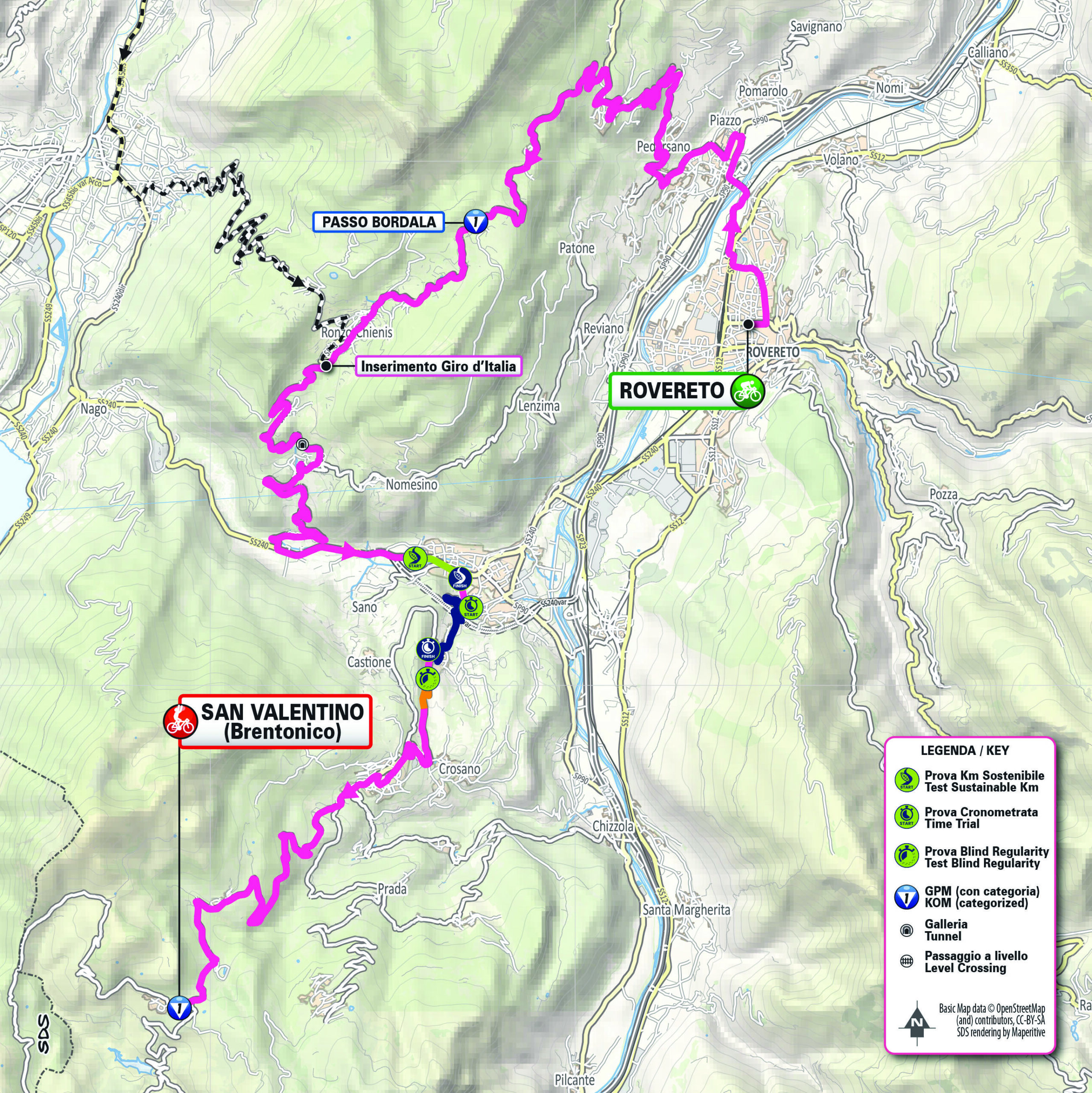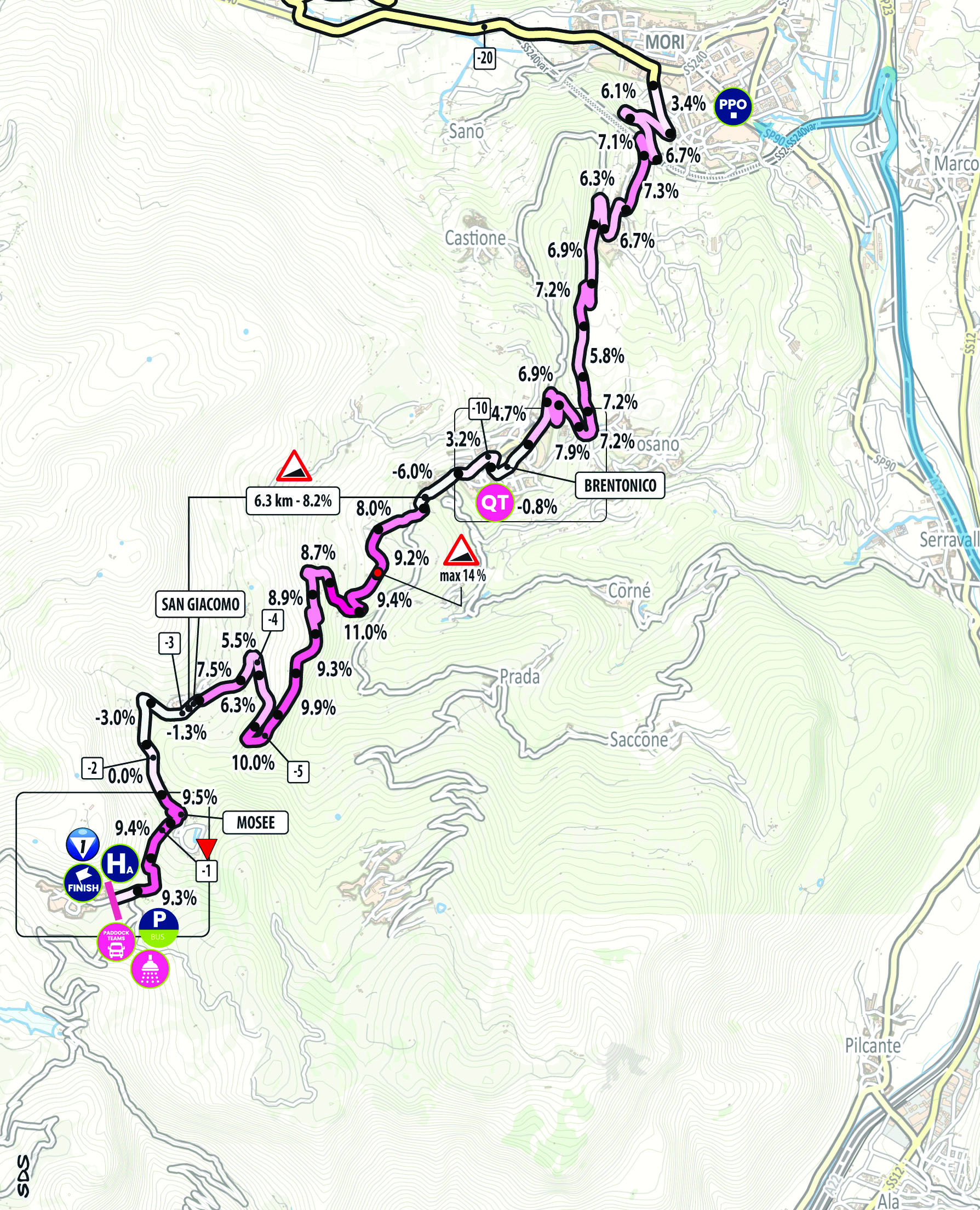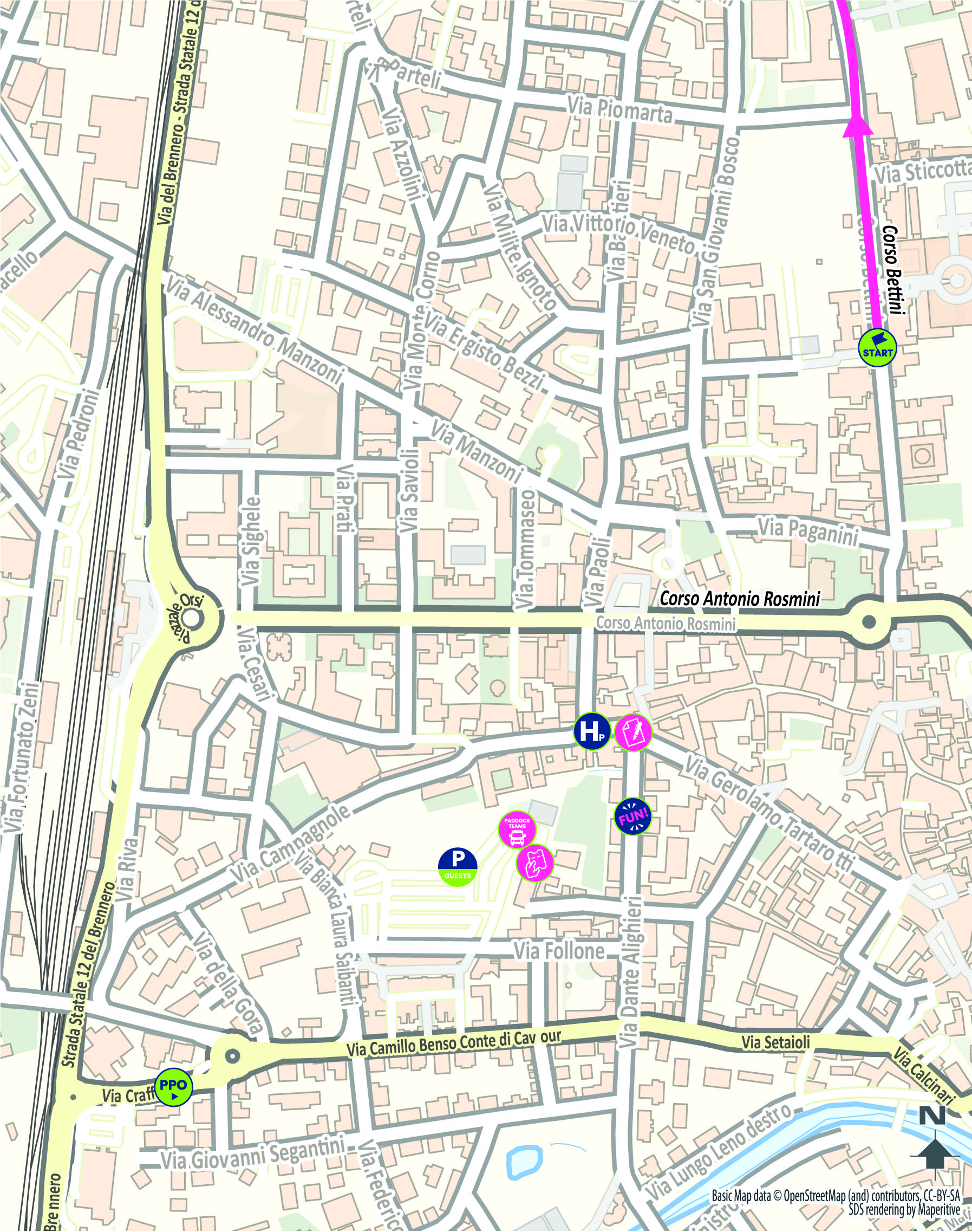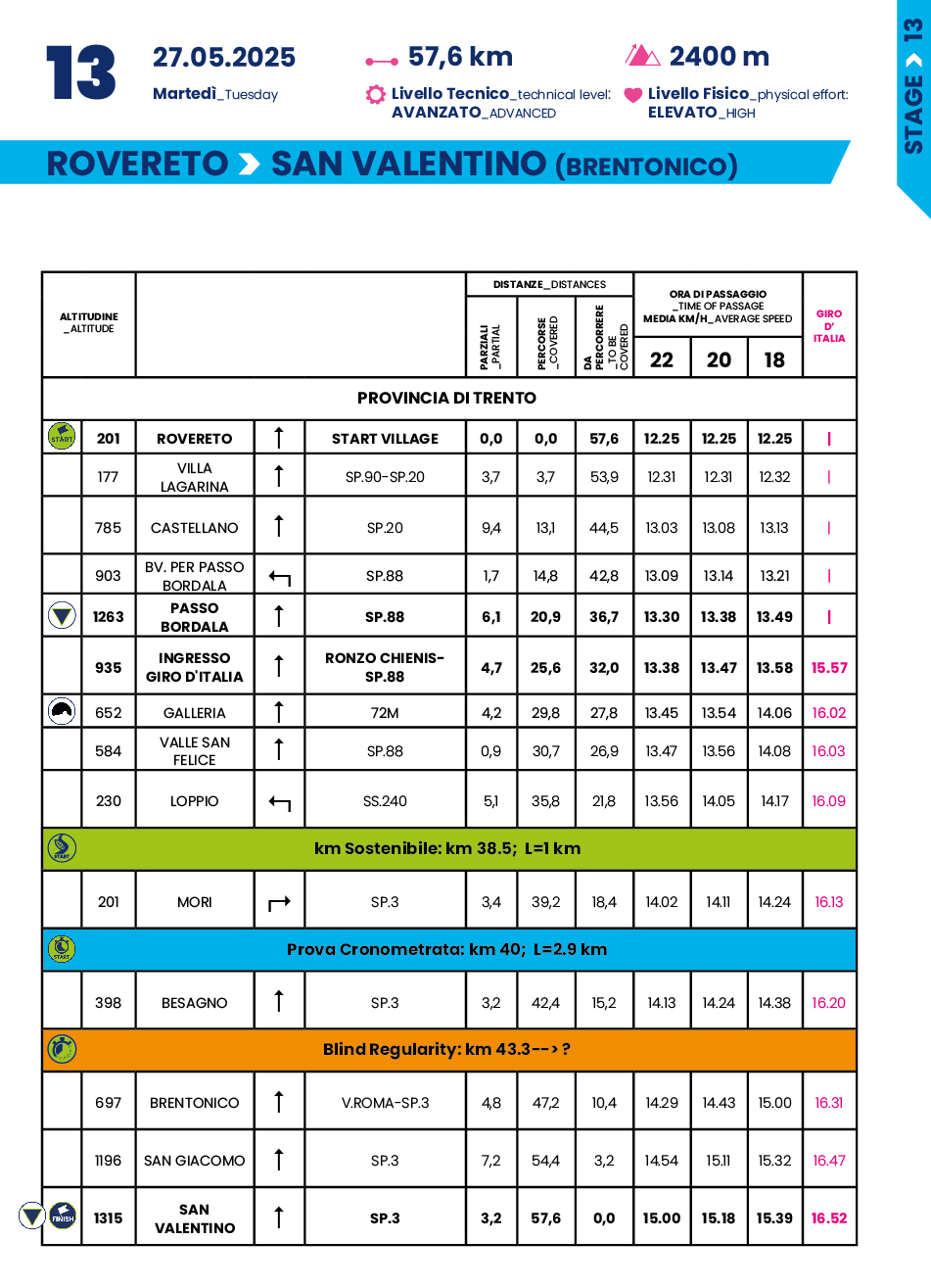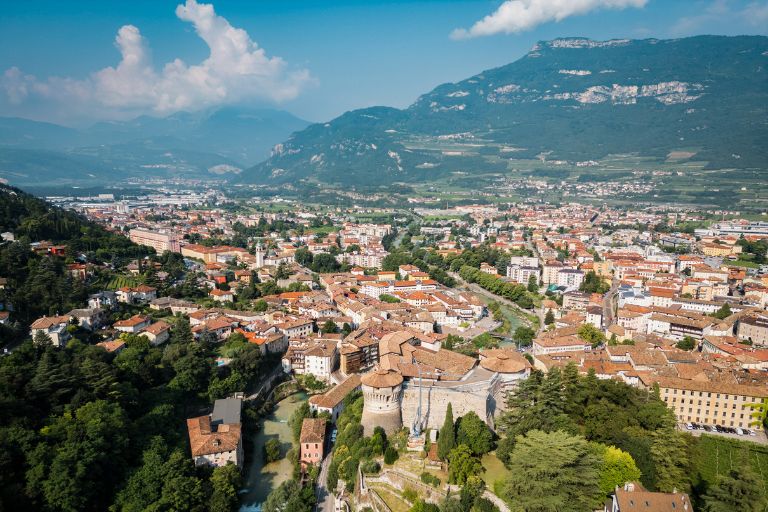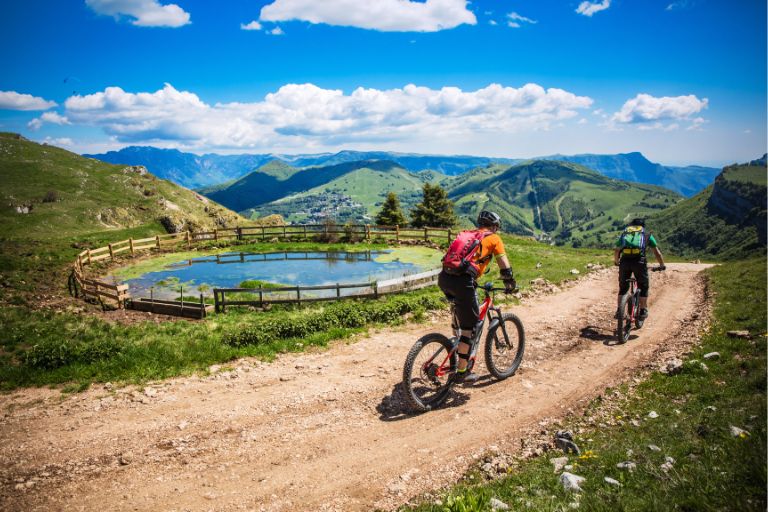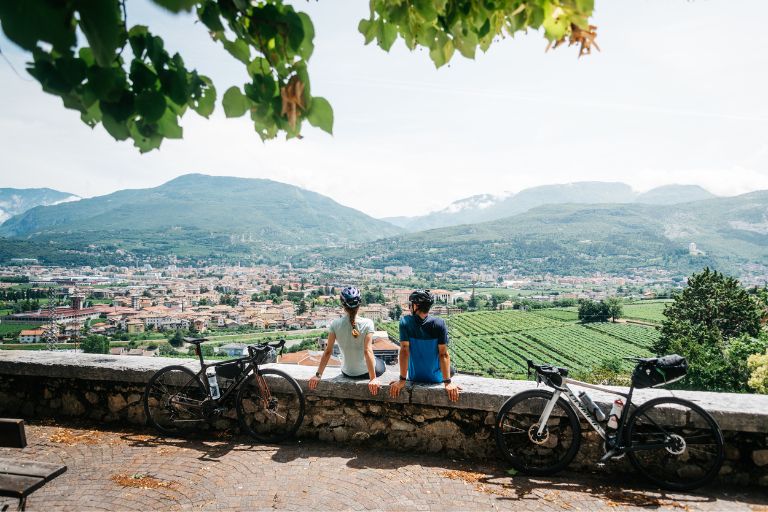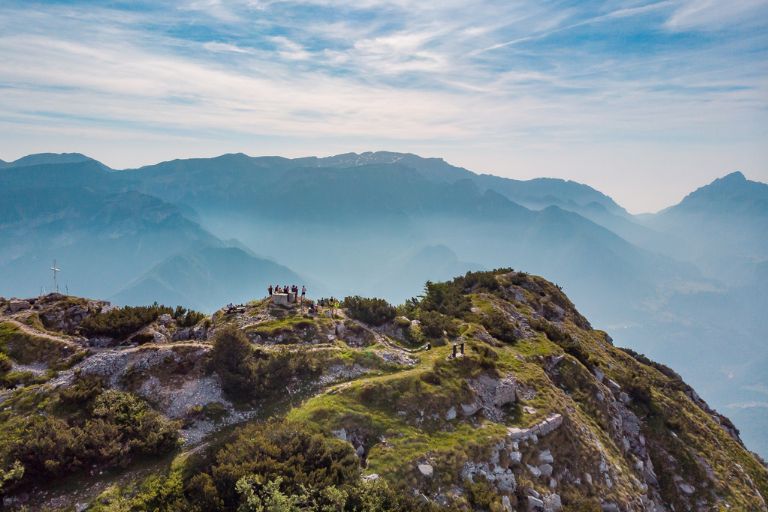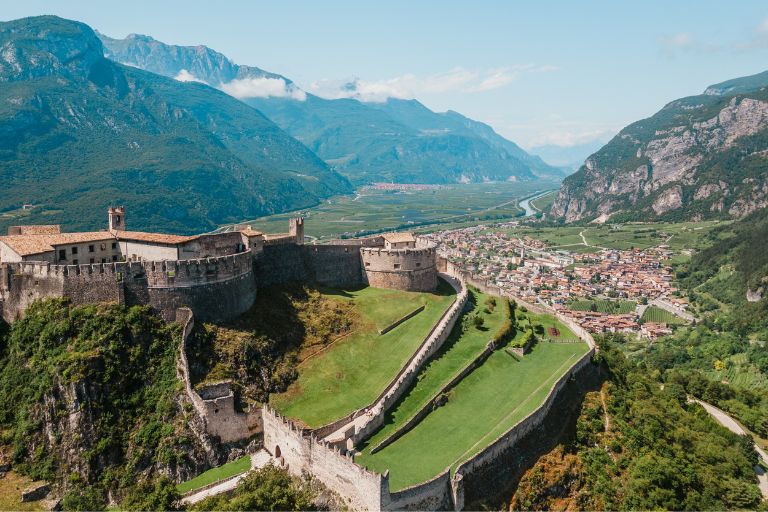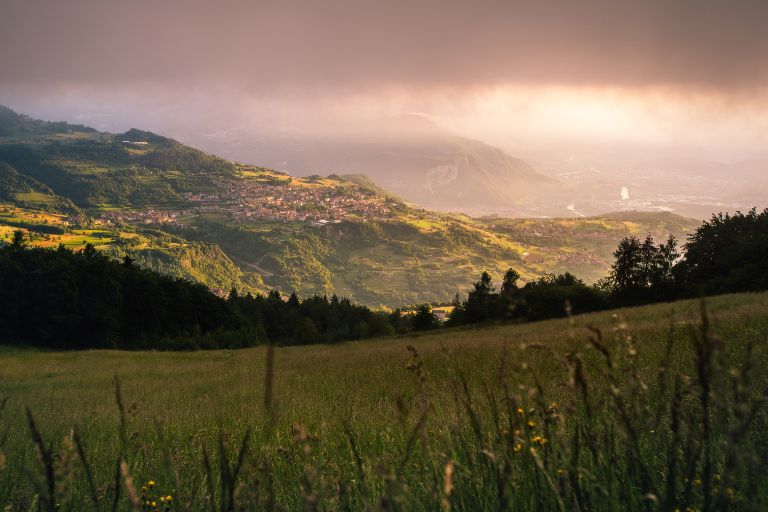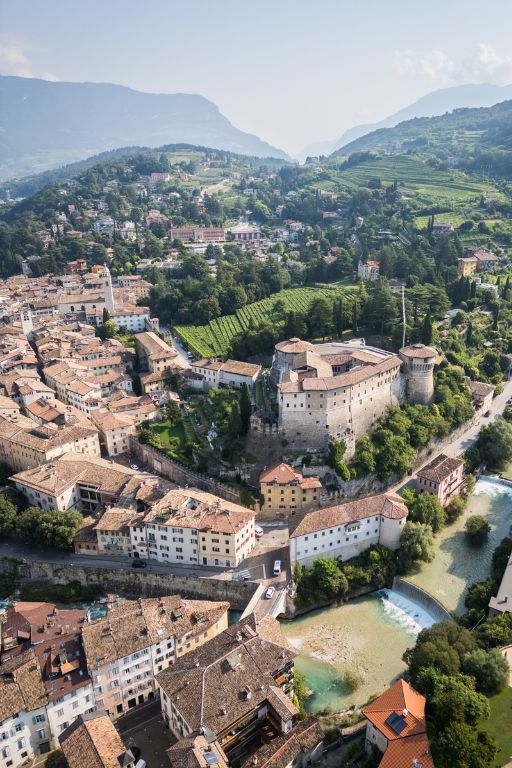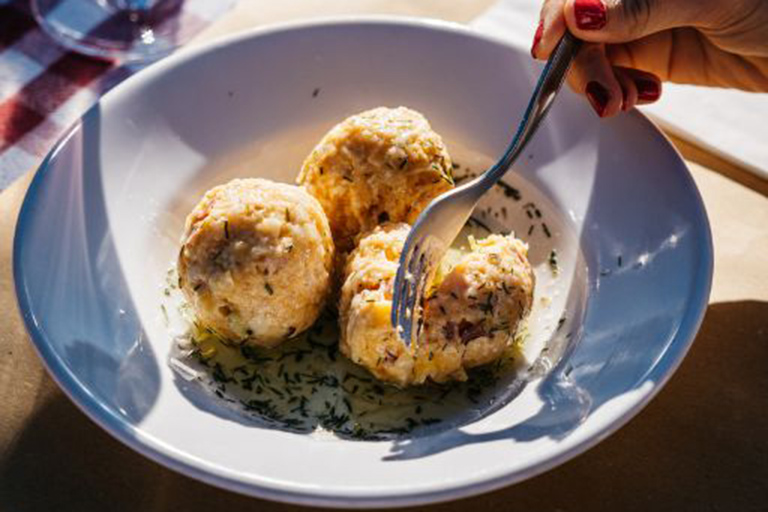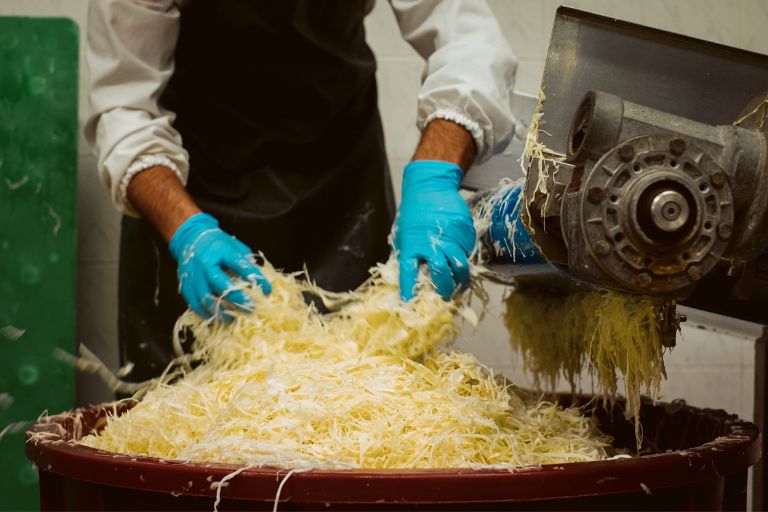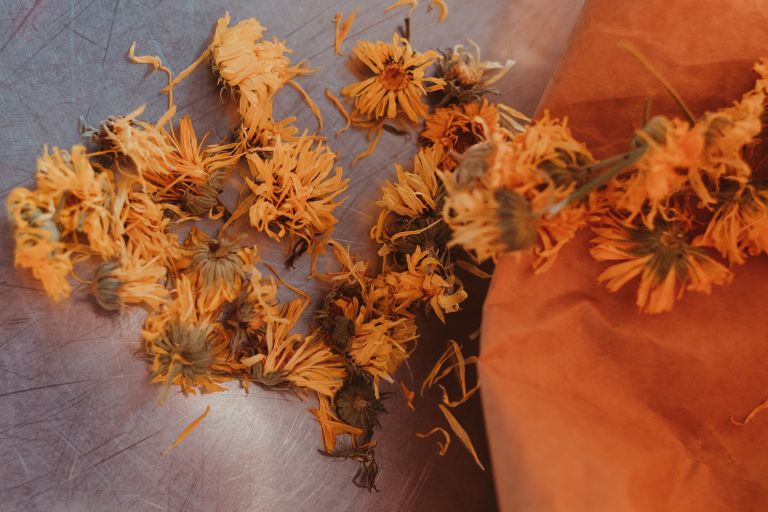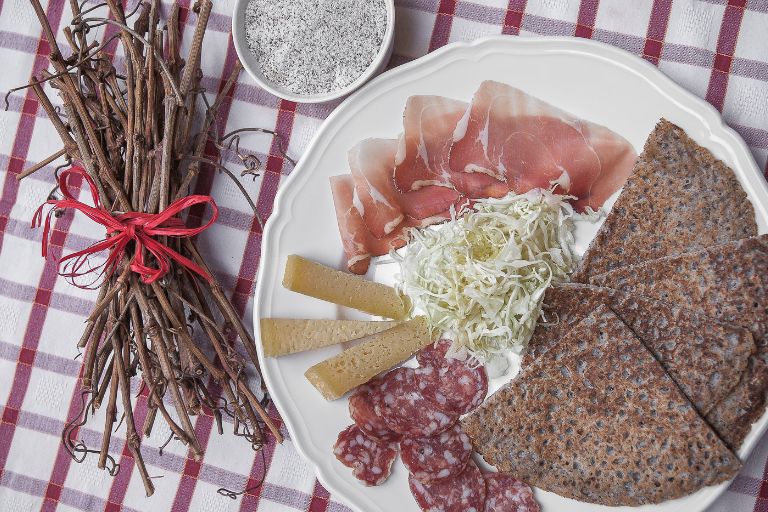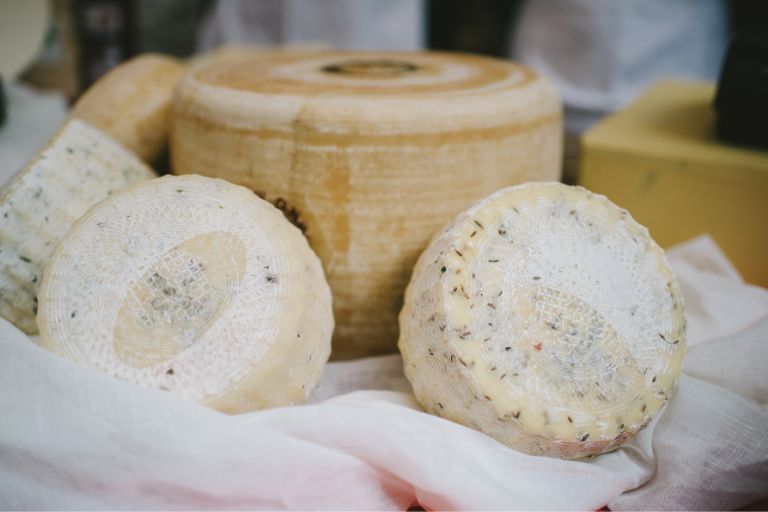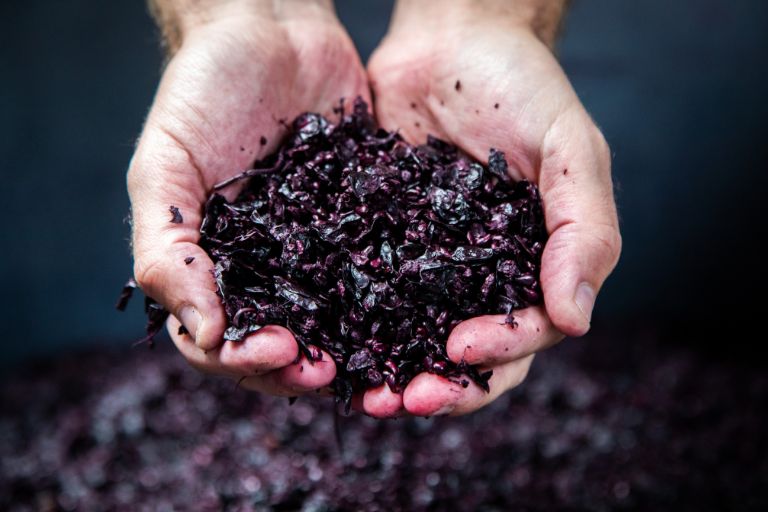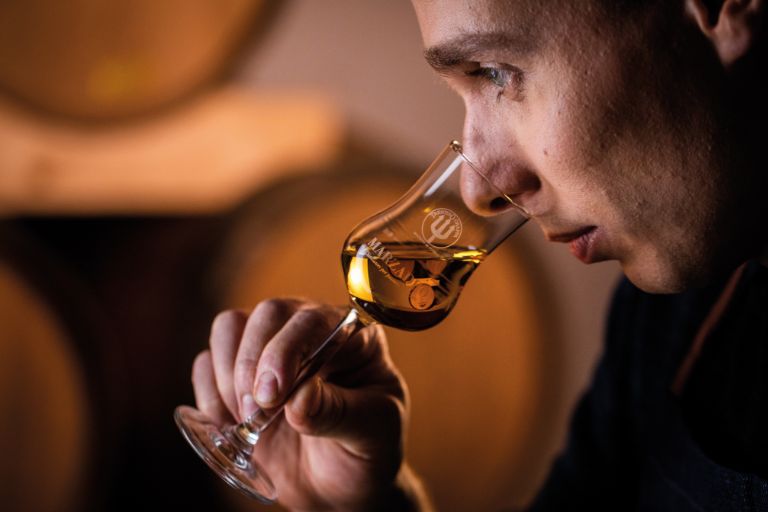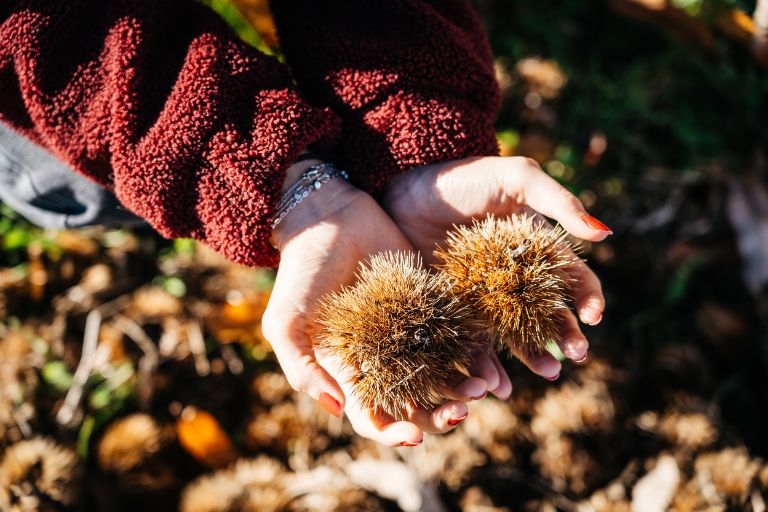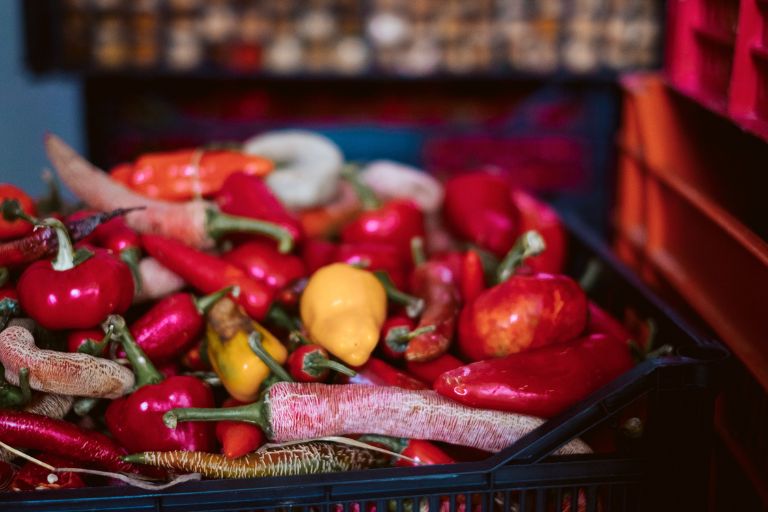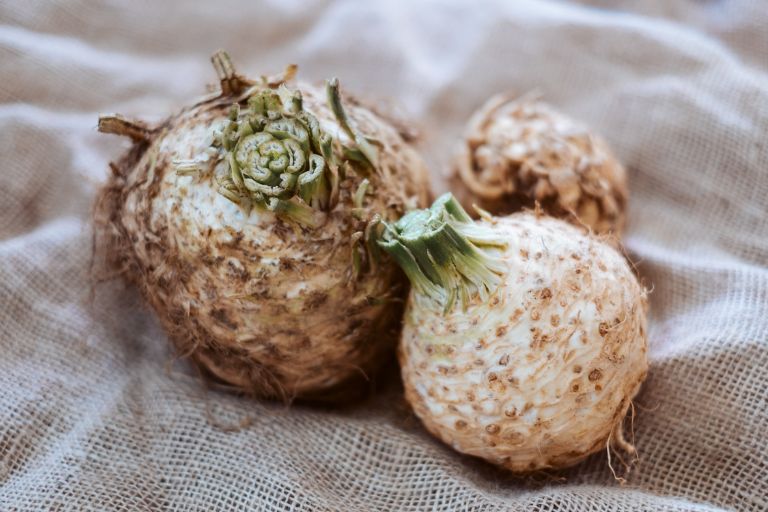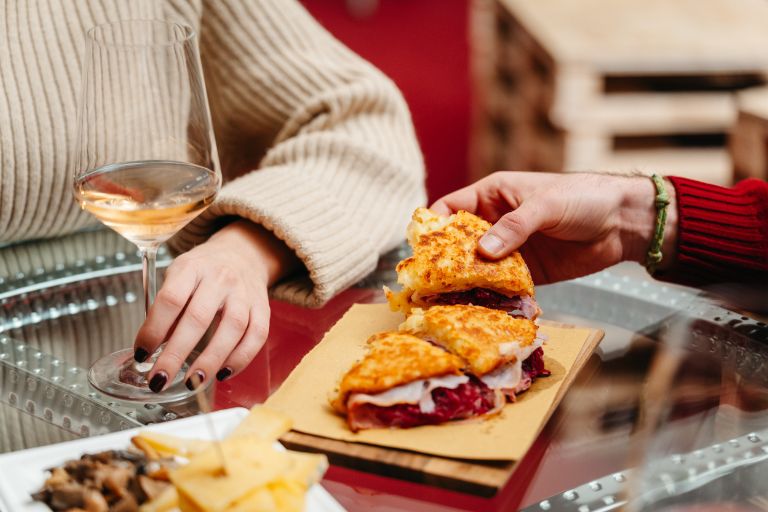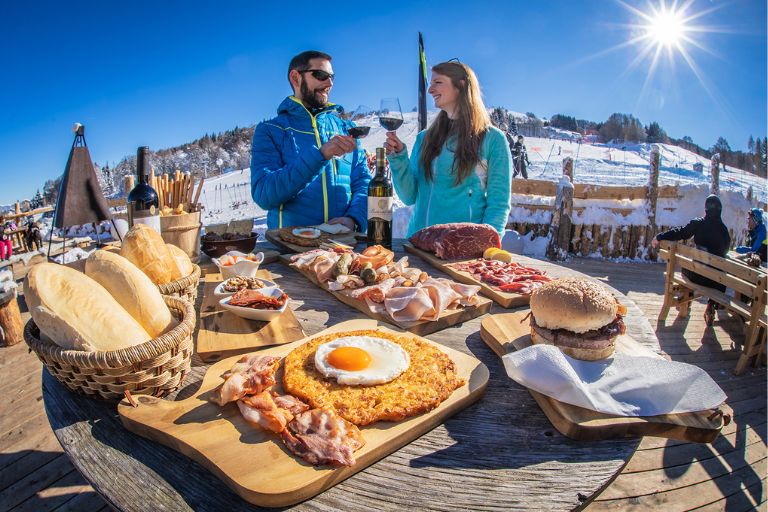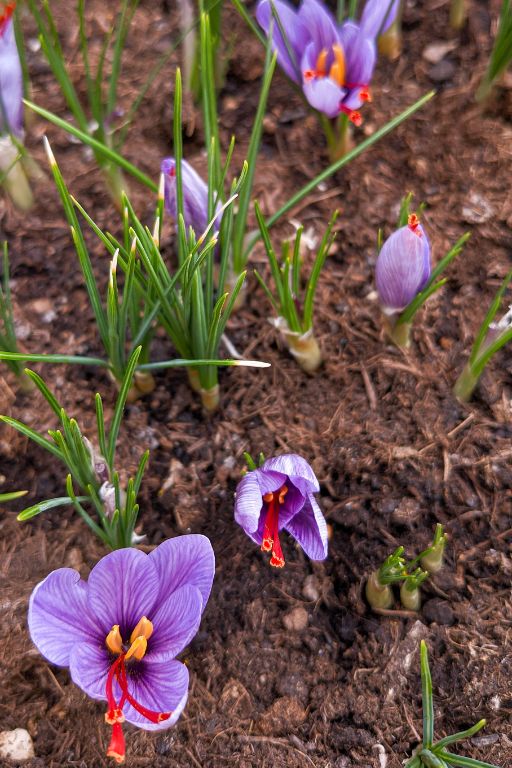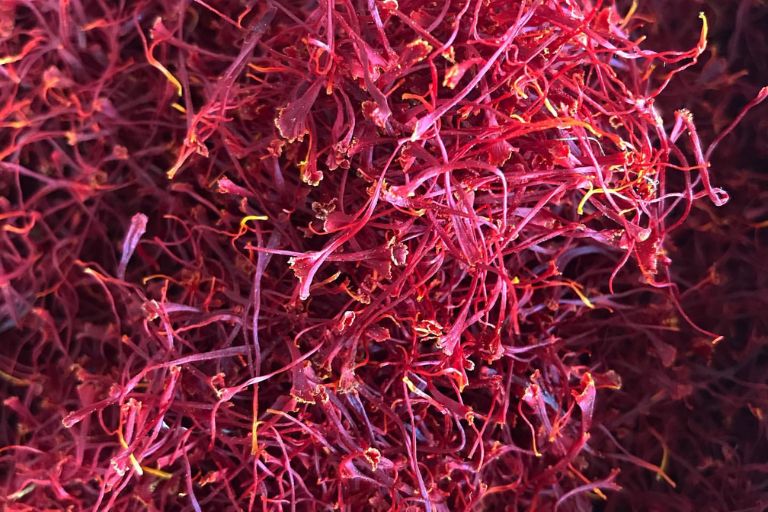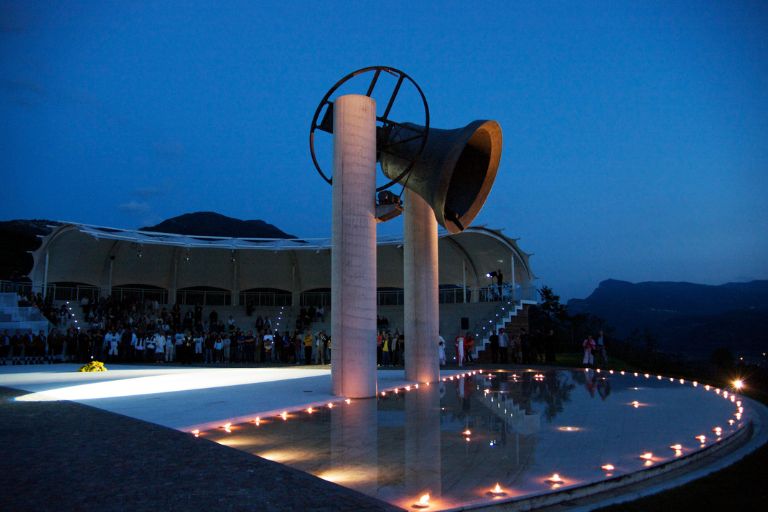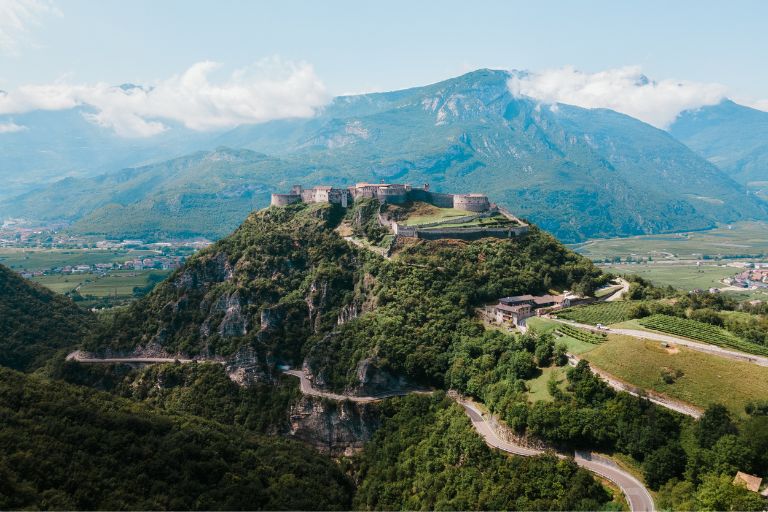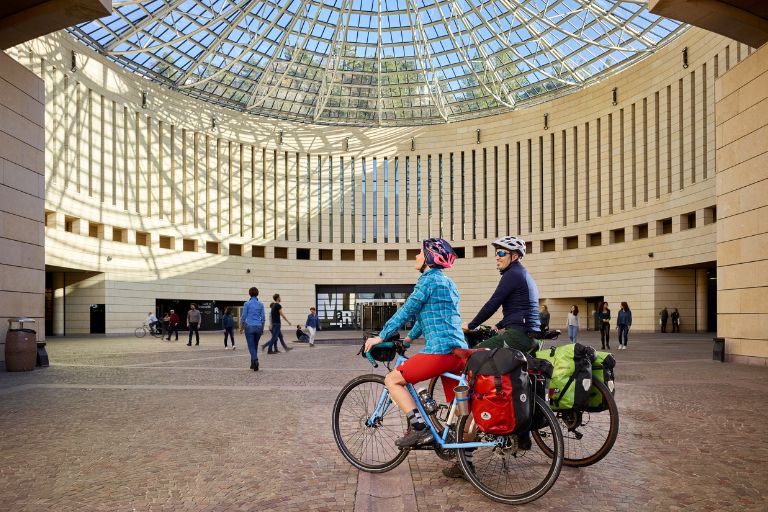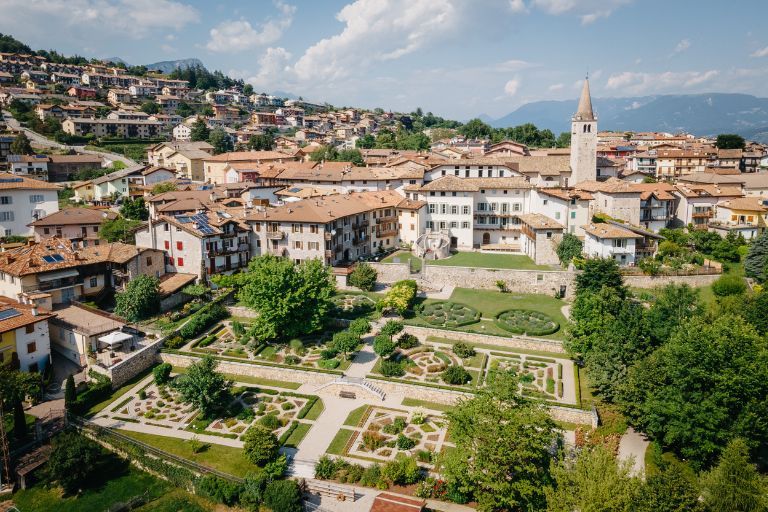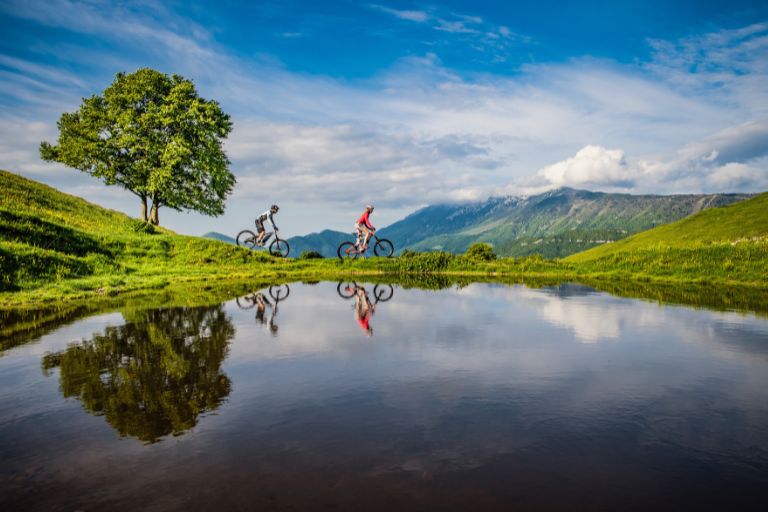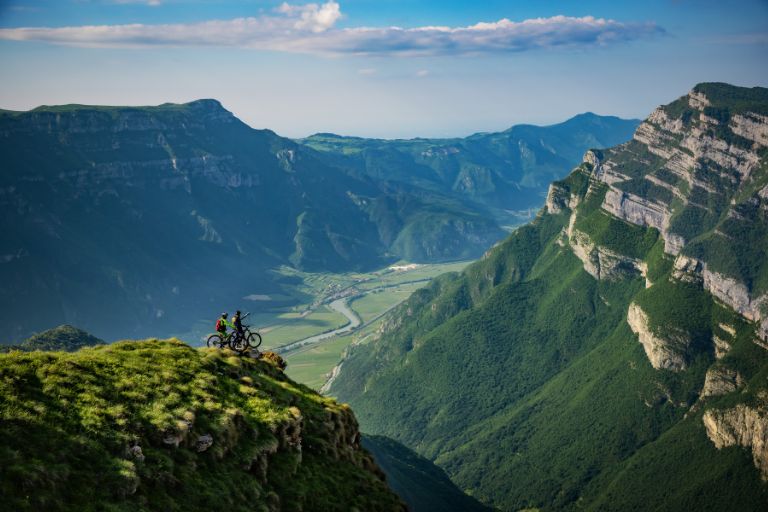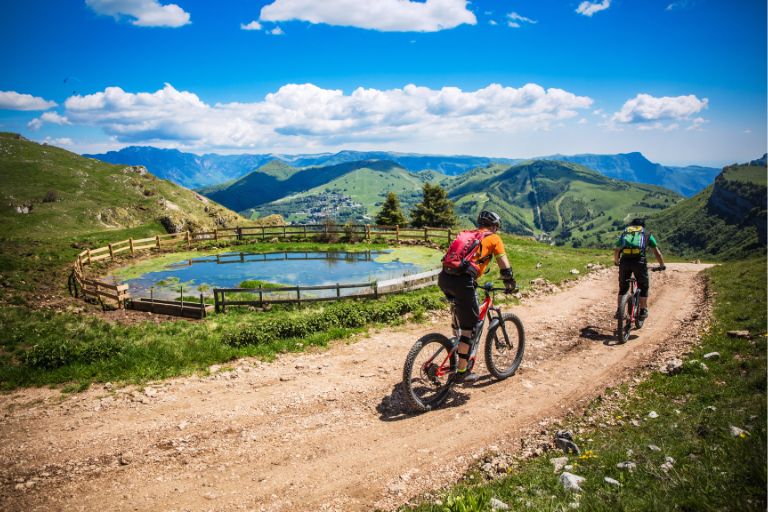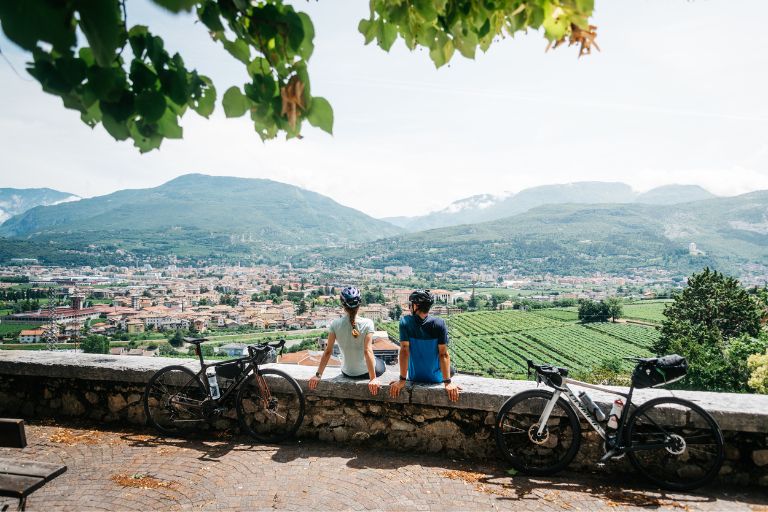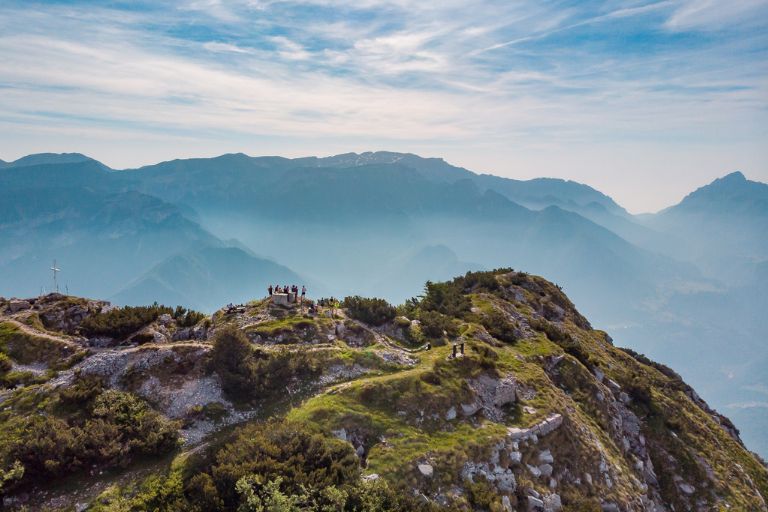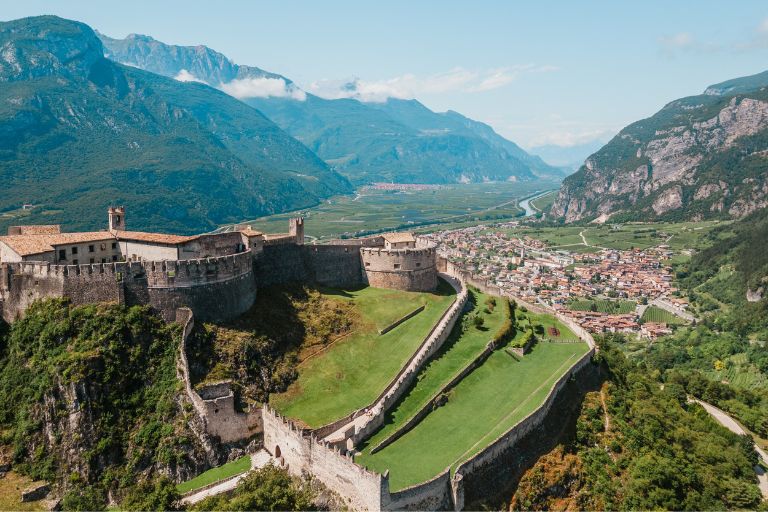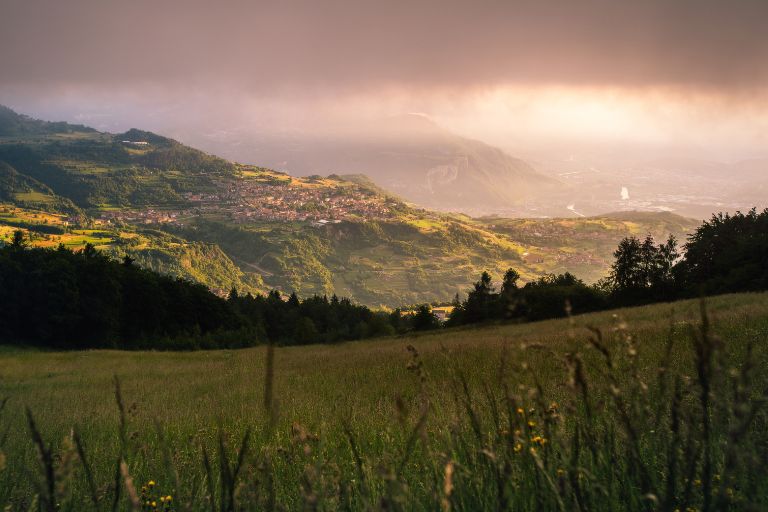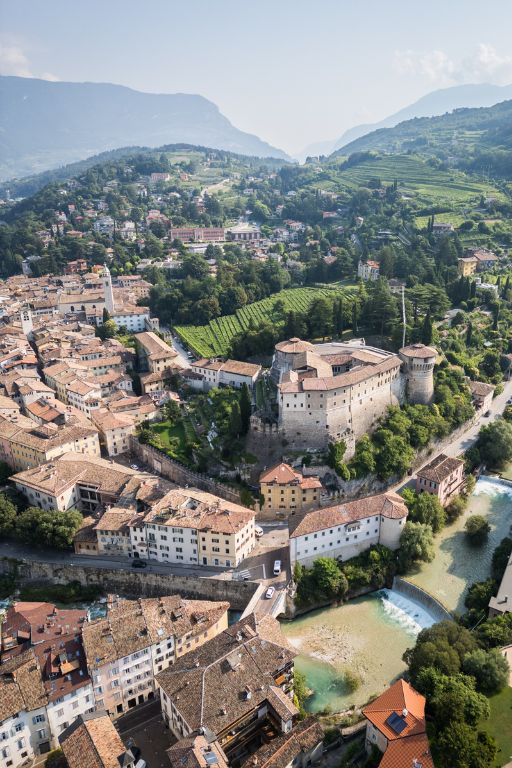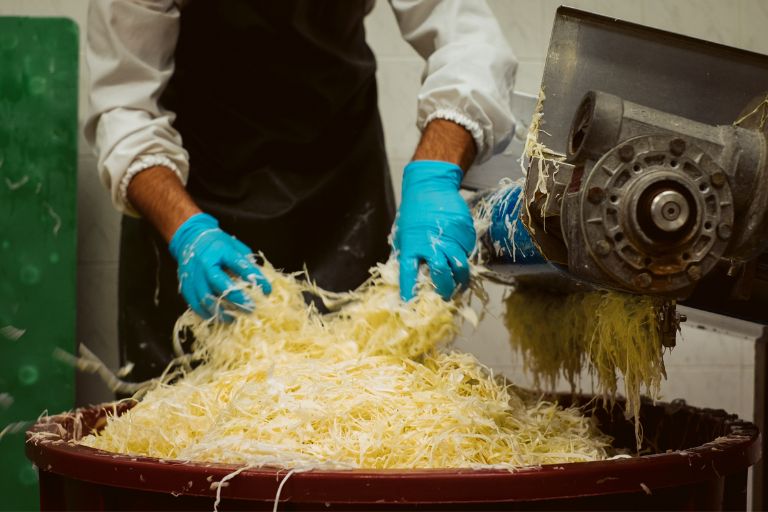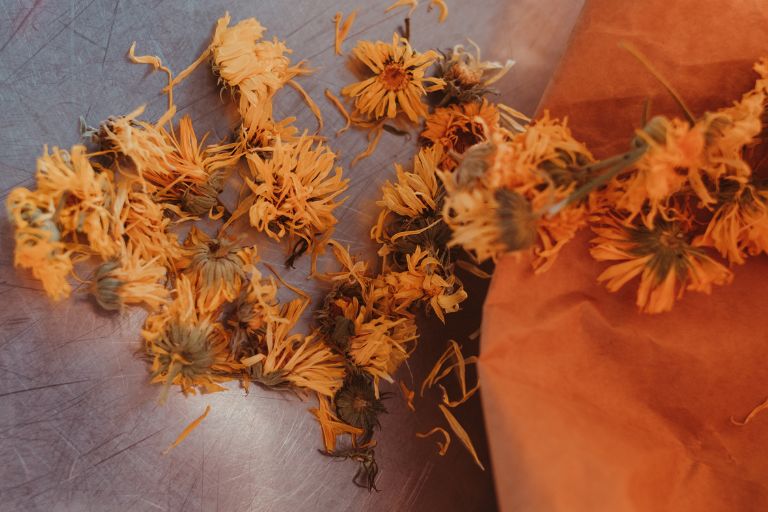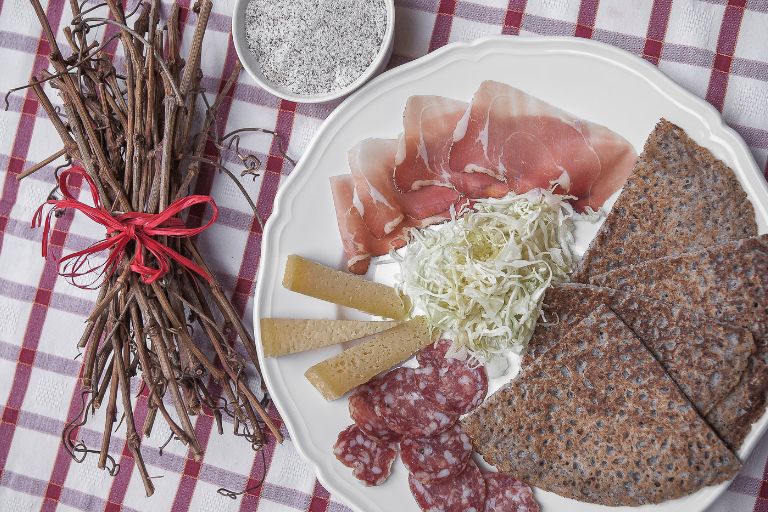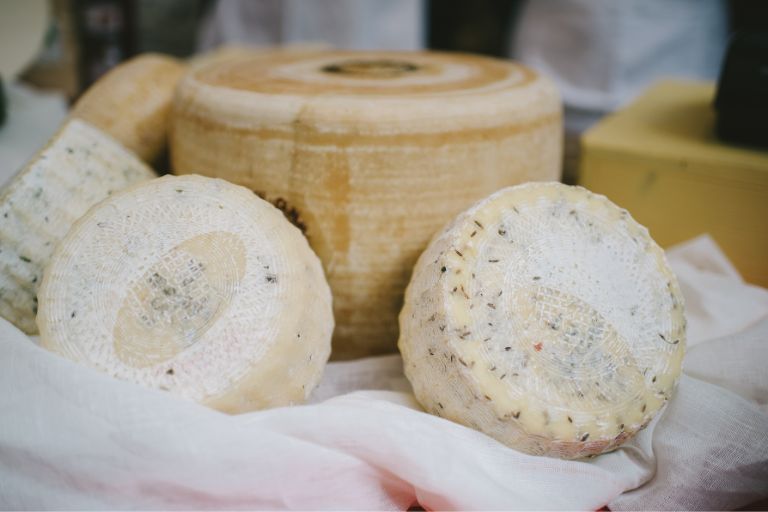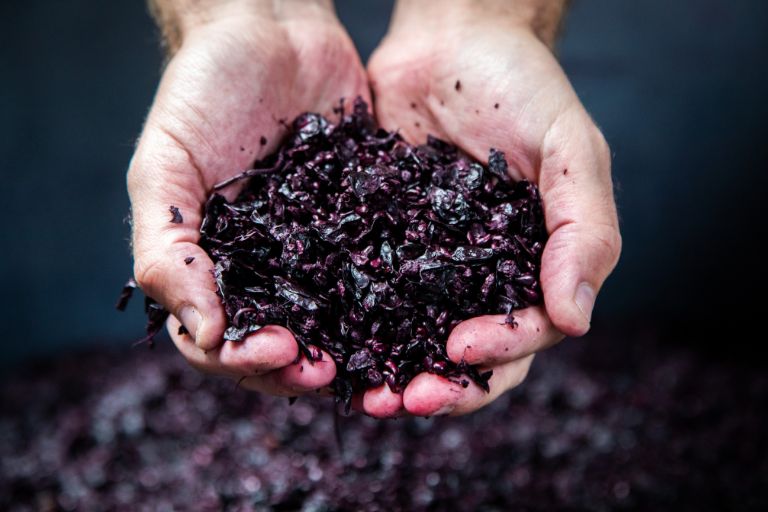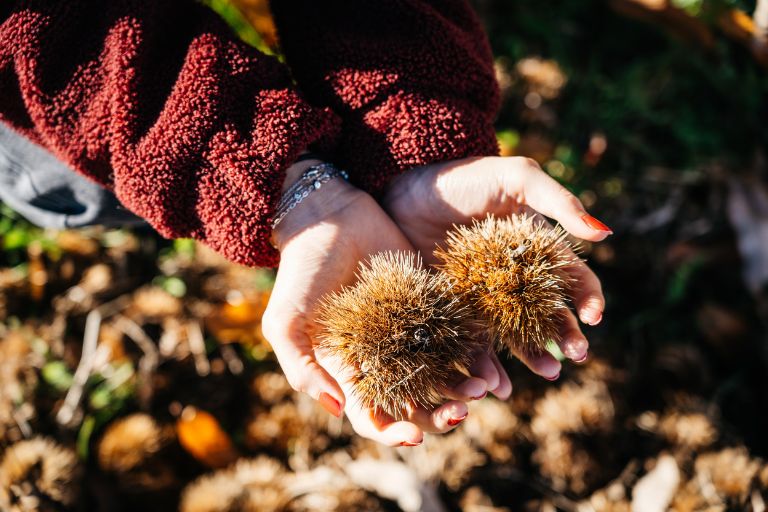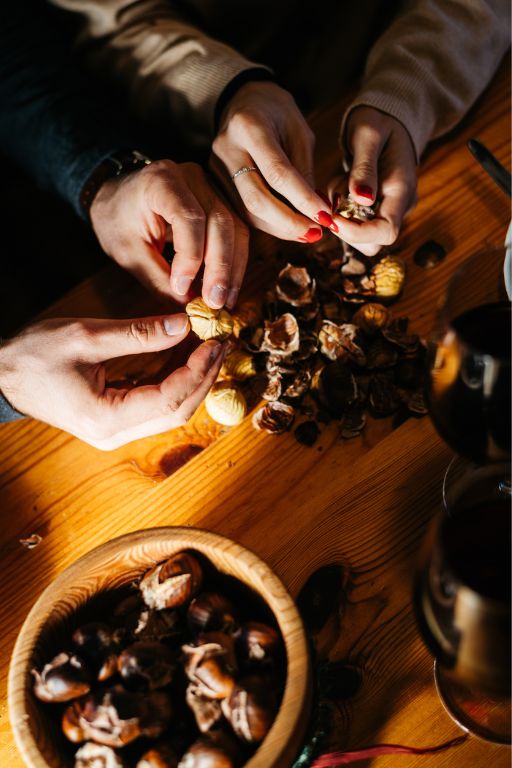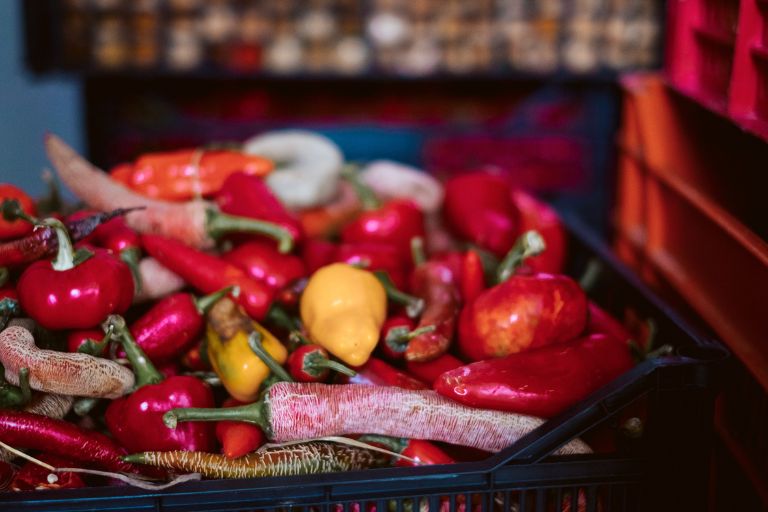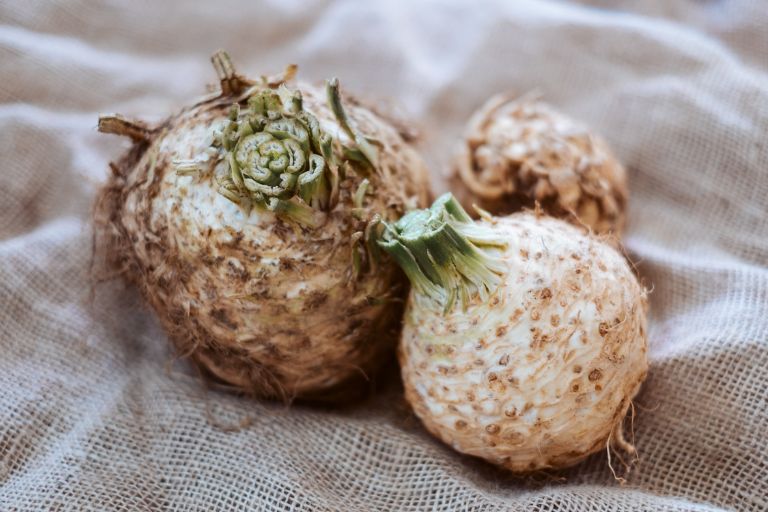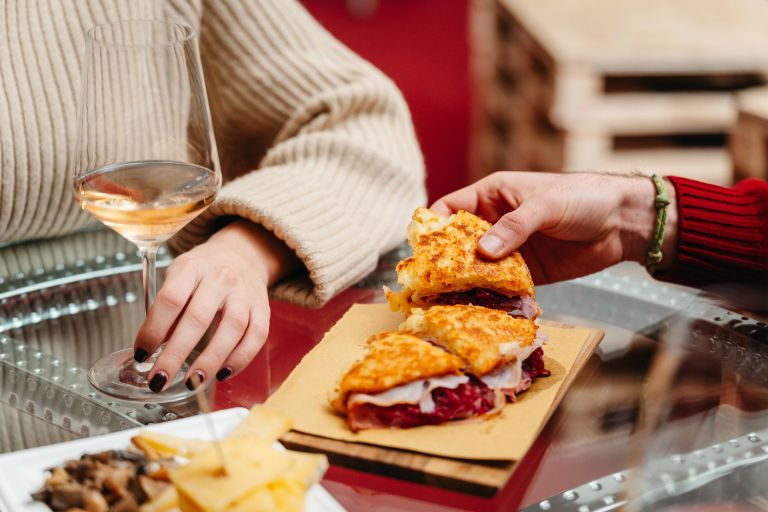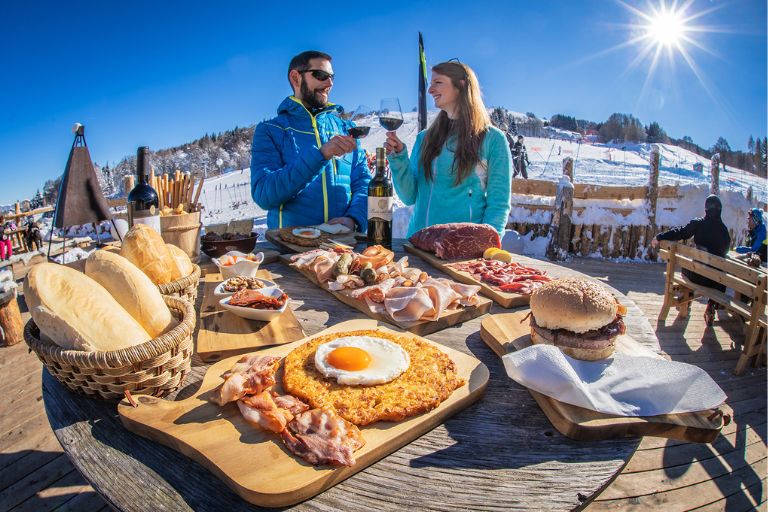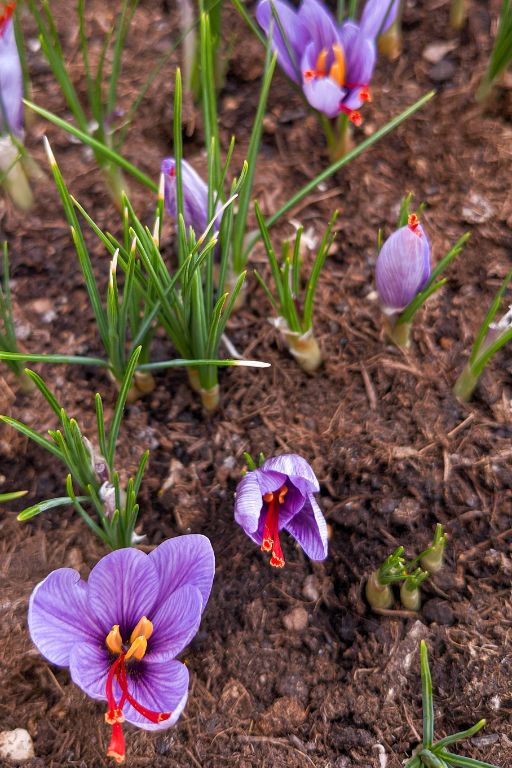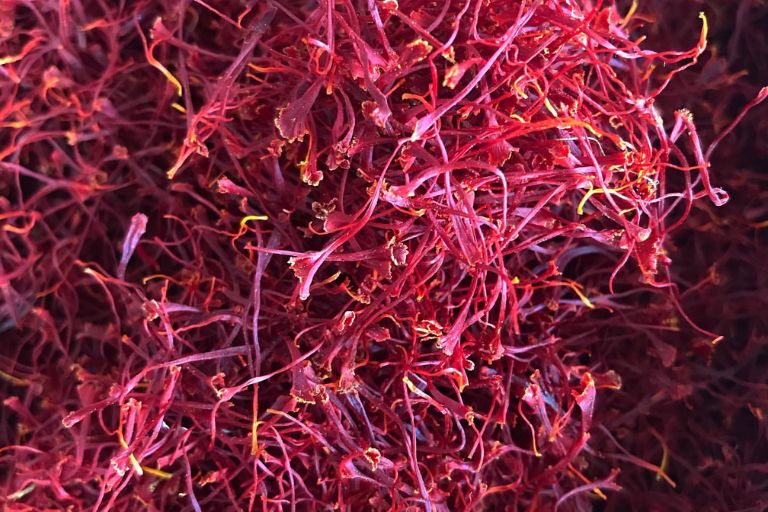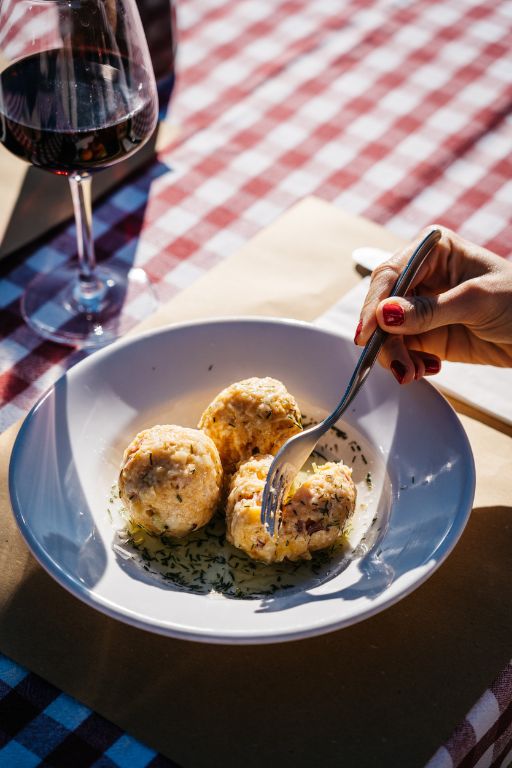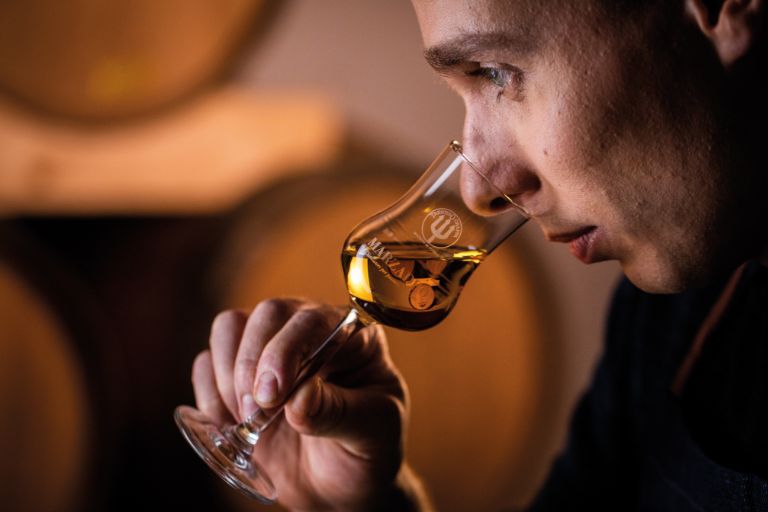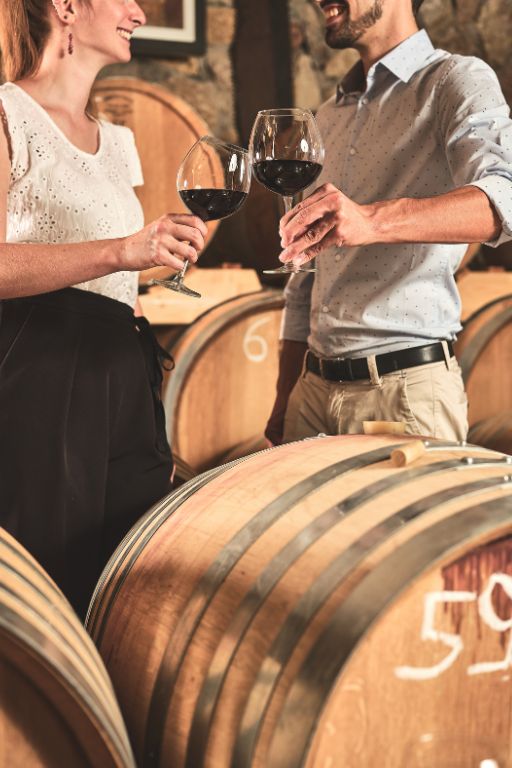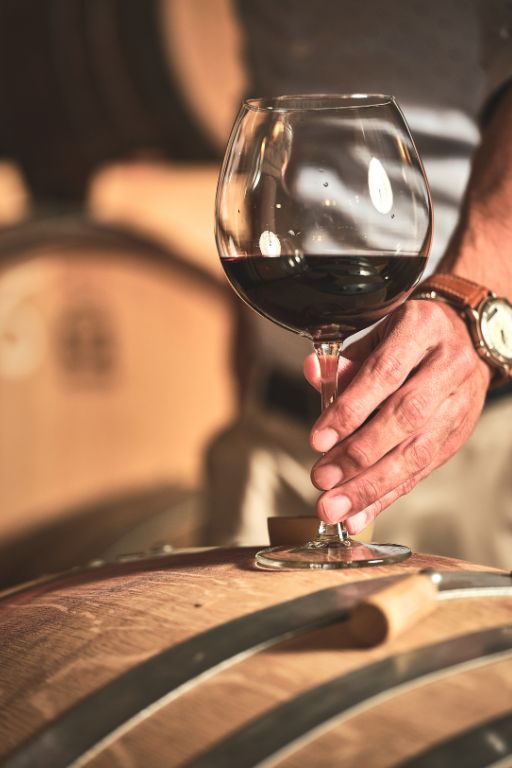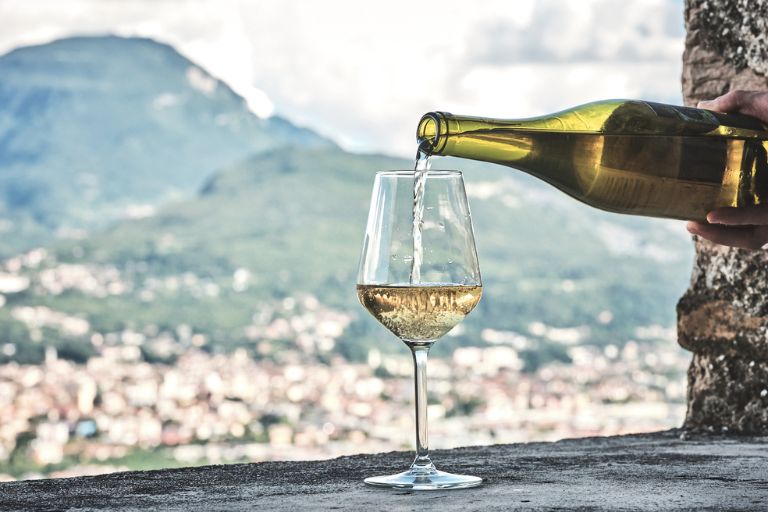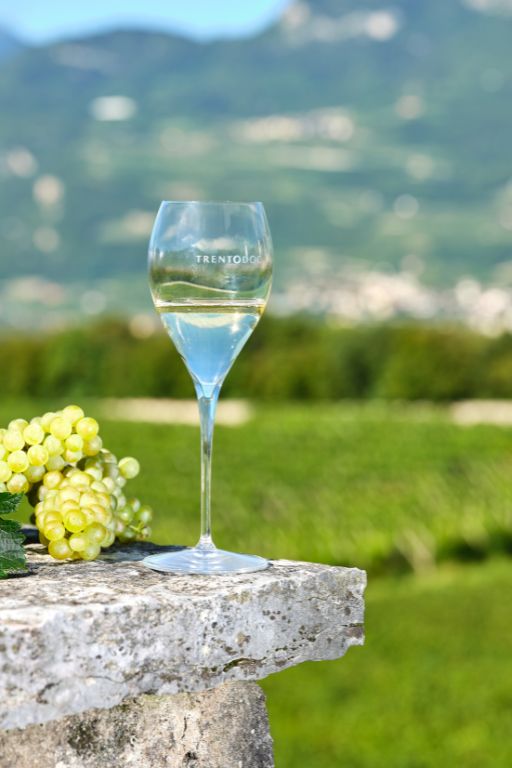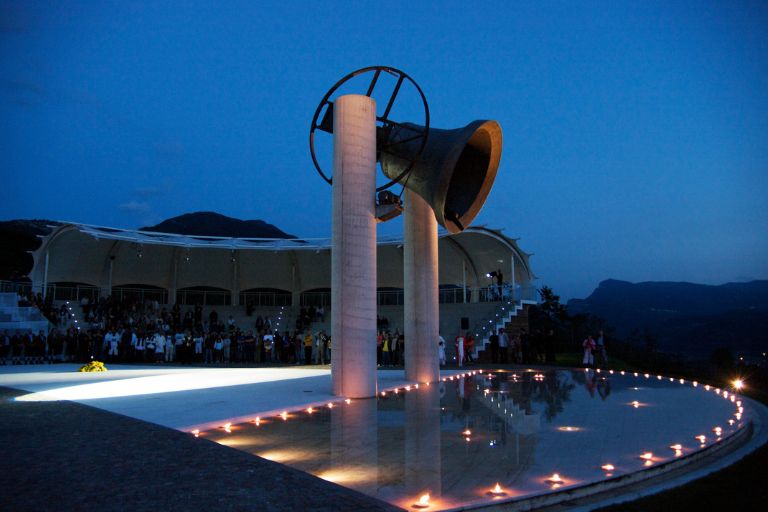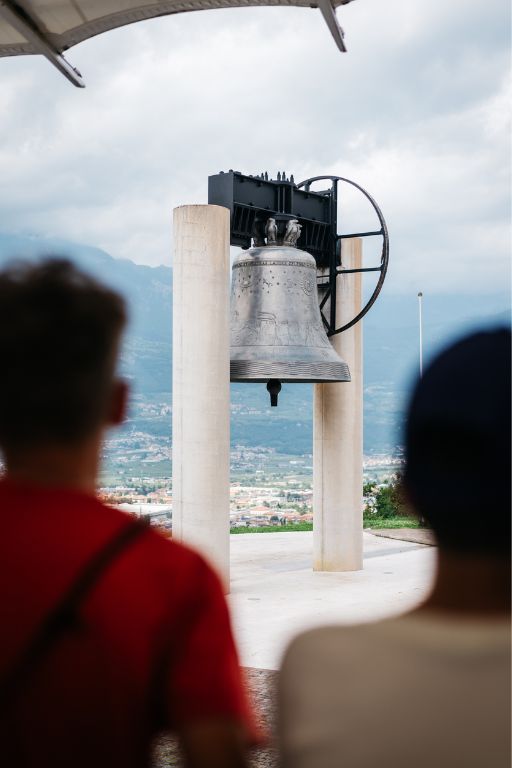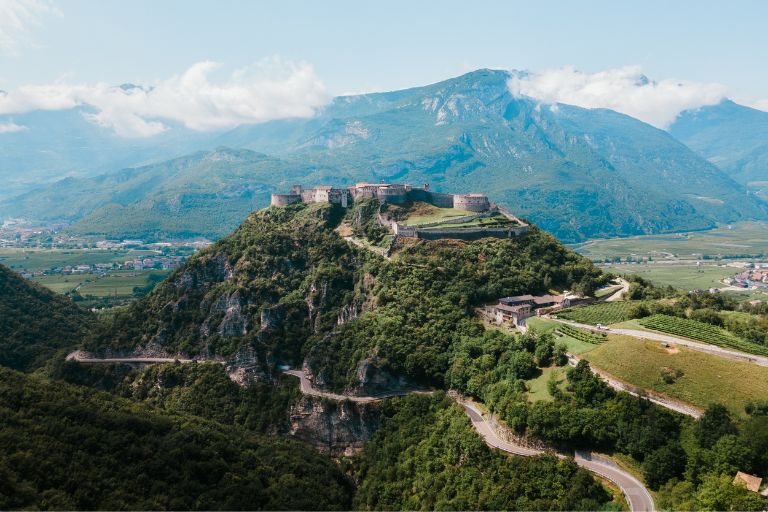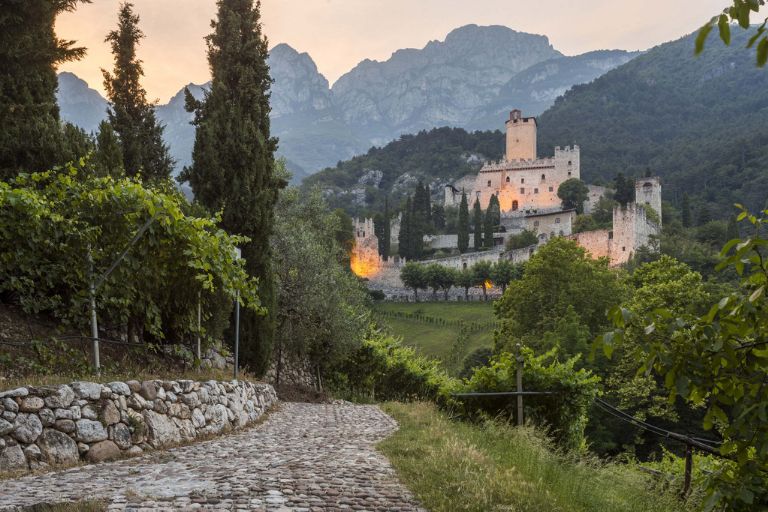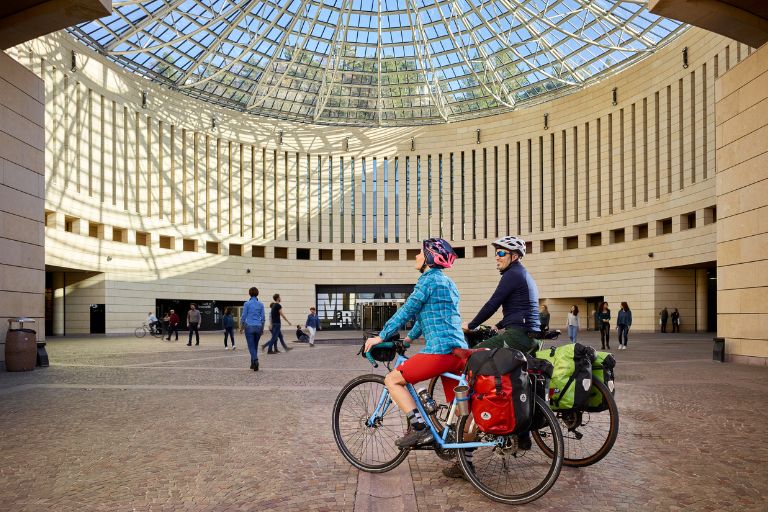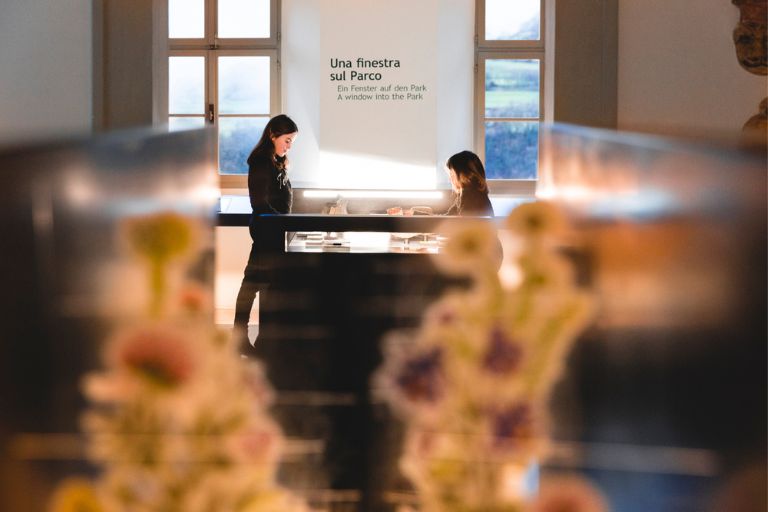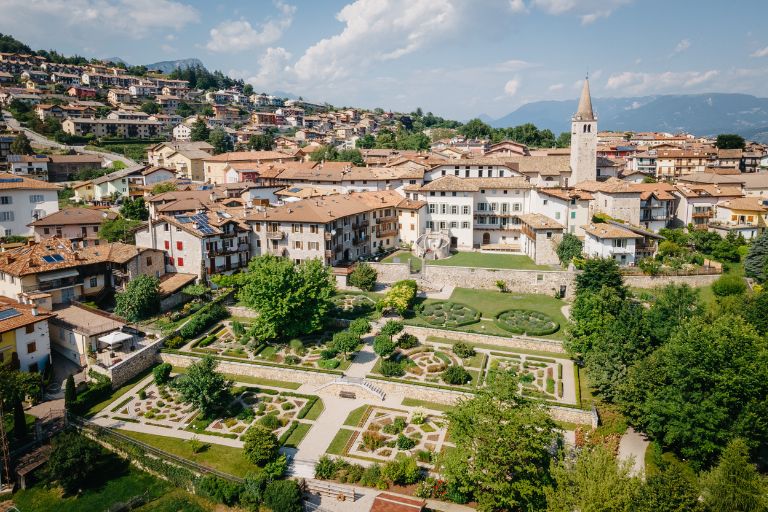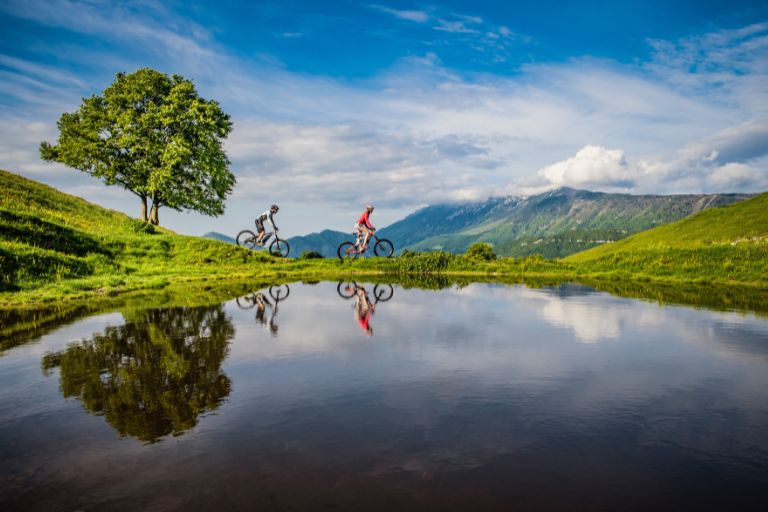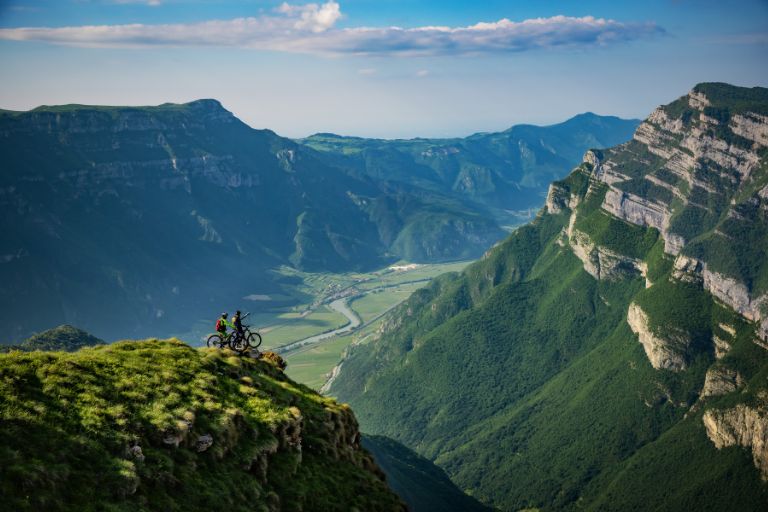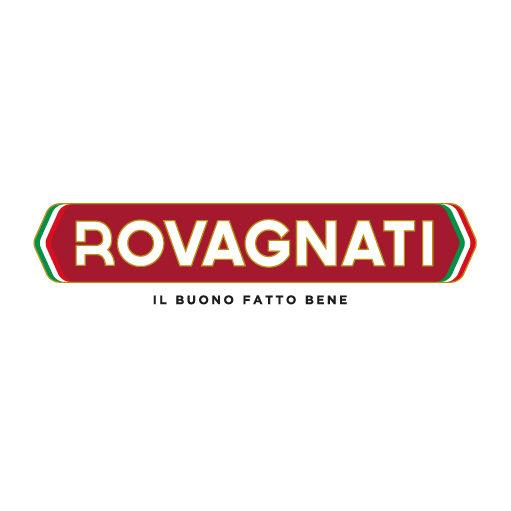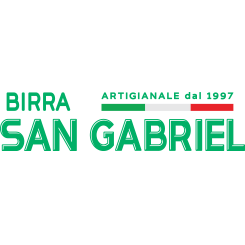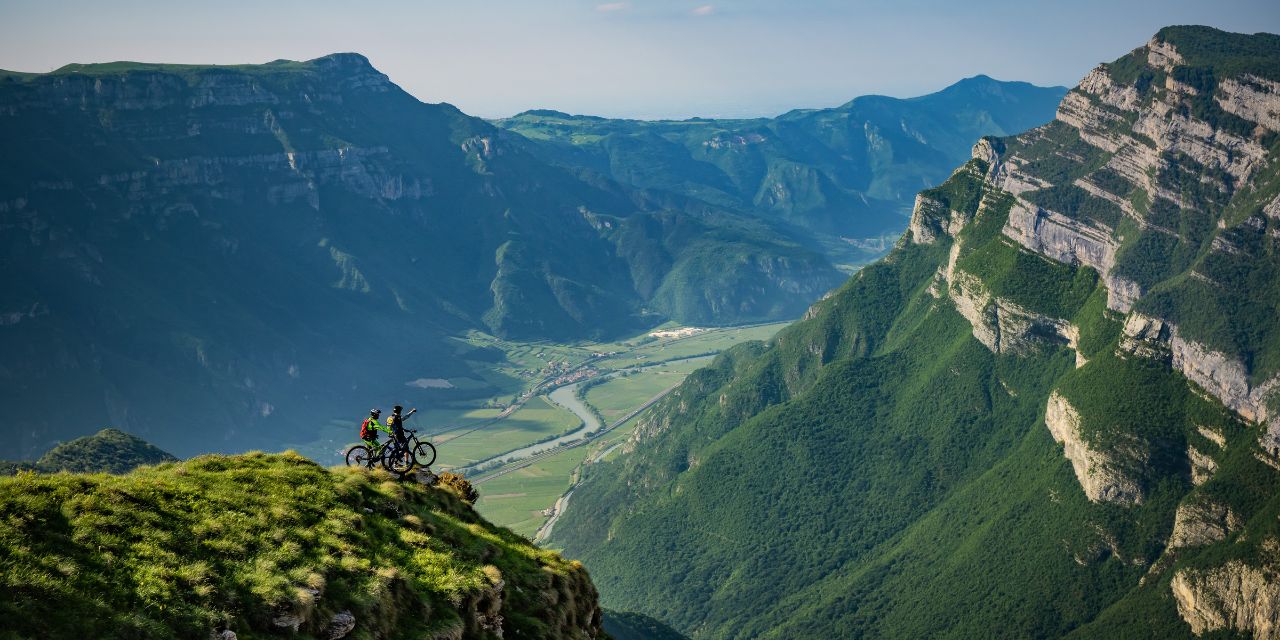
Stage
13
Tuesday 27
May 2025
57,6 km
Altitude gain 1400 mt
Technical Level: Advanced
Physical Effort: Elevato

Rovereto -
San Valentino
Rovereto - San Valentino (Brentonico)
tourist info
Host city:
Rovereto
Overview
Rovereto has been a vibrant industrial, tourist and cultural center of Trentino for centuries, so much so that in the 18th century it earned the nickname “Athens of Trentino” for its intellectual and artistic ferment. Also known as the “City of the Oak,” in reference to the oak tree that symbolizes its strength and historical roots.
Nestled among the hills and vineyards of the Adige Valley, Rovereto captivates with its interweaving of history, art and culture. Located along the ancient route connecting Verona and Trento, it is a crossroads of peoples and traditions, where the past blends harmoniously with the present. To walk through its streets is to take a journey through time, passing through different eras and architectural styles. The ancient walls of the Castelbarco Castle evoke the Middle Ages, while the Casa del Podestà recounts the period of Venetian rule. The elegant 18th-century palaces of Corso Bettini testify to the cultural fervor of the period, while the Castle of Rovereto preserves the memory of World War I. The heart of the city is embellished by prestigious buildings such as the Teatro Zandonai, the Accademia degli Agiati and the Civic Library, housed in the imposing Palazzo dell’Annona. Rovereto has welcomed illustrious figures, including Mozart, who held his first concert in Italy right here in the Church of San Marco.
The city boasts an extraordinarily rich cultural scene thanks to its museums, which range from art to history to science. The MART, one of Italy’s most important museums of modern and contemporary art, and the Casa d’Arte Futurista Depero recount the artistic evolution of the 20th century. The Italian Historical Museum of War preserves valuable evidence of world conflicts, while the Museum of Science and Archaeology explores the natural history and archaeology of the area.
Rovereto is also a city of events, a true stage that hosts dance, theater, music and film festivals.
Above all, Rovereto is the “City of Peace,” a title inspired by the presence of the majestic Campana dei Caduti, cast from the bronze of World War I cannons, which every evening spreads its solemn tolling to remind us of the importance of brotherhood among peoples. Nearby, the Sacrarium of Castel Dante holds the remains of more than 20,000 soldiers, a place of remembrance and reflection that strengthens the city’s bond with its past and its desire to build a future of harmony and dialogue.
Rovereto is an experience to be lived, a city capable of surprising with its atmosphere, heritage and cultural energy, giving those who visit it a fascinating journey through history, art and traditions.
Gastronomy
•Castione Chestnuts
In the village of Castione, on the Brentonico Plateau at the foot of Monte Baldo, the cultivation of chestnuts is a centuries-old tradition. In the past each family owned at least one tree, with production also destined for export, while today about 2,500 plants, some over three hundred years old, offer large, heart-shaped, sweet-tasting, fine-grained fruits. The processing of the chestnuts gives rise to delicious flours and dishes, celebrated each October during the Chestnut Festival.
•Mount Baldo malga cheeses: Primo Fiore and Affogato all’Enantio
In Vallagarina, the art of cheese-making has a long tradition, still present in its various areas, including Monte Baldo. Here, in the welcoming “malghe” (shepherd’s huts), you can still witness the processing of milk and experience firsthand the excitement of milking and taste the products. The local cheeses are characterized by a yellow-hued paste, due to the carotenes of the grasses and more generally of the local microbial flora of the pastures, offering unique aromas and flavors: Primo Fiore is considered the local cheese par excellence, Affogato all’Enantio takes its name from the native wine with which the cheese is aromatized.
•Herbs and officinal flowers of Mount Baldo
The harvesting of wild herbs, an ancient Trentino tradition still widely practiced on Mount Baldo, makes it possible to create valuable products that carry the flavors, essences and scents of the mountains, as well as the excellent Baldo honey that excels in fragrance and intense coloration. The variety of plants is an indication of the healthiness of the area, the result of a perfect balance between soil, air and water. Local specialties, the result of the patient and respectful work of the gatherers, embody values such as respect for nature and tenacity in overcoming difficulties.
•Baldo saffron
Various medicinal and food plants grow in the forests and meadows: of particular value is Baldo saffron, made from Crocus Sativus, famous for its intense aroma, strong flavor and characteristic yellow color. The flowers, hand-picked in October and November, are processed by manually separating the three stigmas, which are then dried and packaged.
•Fanzelto from the Leno Valleys
Fanzelto is a traditional recipe from Terragnolo, a village in the Leno Valleys, an area facing Vallagarina opposite Mount Baldo. It is a thin omelet-like bread made with buckwheat, water and salt. Its origin dates back to the need to cope with the scarcity of wheat and white flour and brings back memories of the poor cuisine of the place.
•Canederli with Buckwheat
The large “gnocchi” of Alpine cuisine, typical of Trentino, are prepared in the local version with buckwheat, milk and eggs, enriched with speck or cured meats, or in a vegetarian version with spinach, parsley and flour (known locally as Strangolapreti). Served in broth or with dark melted butter, they are a mainstay of the regional culinary tradition.
•Potato Tortel
Potato tortel is a Trentino specialty made from grated raw potatoes, salted and sometimes enriched with flour for added texture. The dough is fried in oil, resulting in a golden crispness that makes it an iconic dish in the local tradition and is served as a base for cheese and cold cuts.
Wine and beverage
•Marzemino – The red wine mentioned in Mozart’s “Don Giovanni”
Marzemino has come into contact with different peoples, cultures and traditions, Asian and European, even taking on different names from time to time. It has graced the tables of our continent, but it was in Vallagarina, particularly in the area of Isera and the Ziresi, that it eventually found its ideal habitat, becoming one of the symbolic wines of Trentino. Ruby red in color, it has aromas and fragrances of berries with floral overtones and slightly spicy notes.
•Enantio – Indigenous wine from Vallagarina.
Enantio, also known as jagged-leaf Lambrusco, found a home several centuries ago in the areas of Ala and Avio. Once an uncontested vine of the valley floor of lower Vallagarina, it is now enhanced thanks to the tireless work of vintners and farmers who oversee its production in the areas most suited for its typicality. A ruby red wine, dry, fresh and full-bodied, with slightly spicy and vegetal olfactory notes. This wine is also used in the production of “Affogato all’Enantio” cheese.
•Casetta – A spicy wine dedicated to true connoisseurs
Today this native variety is cultivated on small areas all along the Vallagarina. Also known in the area as “Maranela,” from the nickname of a Marani family that had it cultivated, the vine was generated by domestication of the wild vine, vitis vinifera silvestris. The wine, which falls under the Terra dei Forti DOC, is deep ruby red in color and harmonizes with appropriate aging as the greener, fruitier notes give way to spicy, complex aromas.
•Nosiola – The white that smells of the Mediterranean
Nosiola is a native variety inextricably linked to the Trentino region, which also boasts ancient ties and joyful productions with Vallagarina. In its delicate aromas with nuances of white flowers, unripe fruit and hazelnuts there is the Mediterranean climate from which Lake Garda and some areas of Vallagarina benefit. The taste is fresh, with good minerality and a finish characterized by a slightly bitter note.
•Moscato – From the canteens of princes to our table
A grape variety particularly common in the lands surrounding the imposing Castel Beseno. Cultivated as far back as Greek and Roman times and in the Middle Ages, it was often served in the canteens of the nobility. Bright yellow in color, sometimes golden, it has a balanced structure and harmony, with an aromatic bouquet, notes of nutmeg, citrus and apricot. Yellow Muscat is processed in dry or sweet versions. The growing interest in this unique grape variety is also evident from the recent recognition, as part of the Trentino Superiore D.O.C., of the “Castel Beseno” subzone between the municipalities of Calliano and Besenello.
•Bordolesi – Refined bouquets from the French tradition.
In the second half of the 19th century Cabernet and Merlot peeped into Trentino, finding Vallagarina a particularly suitable territory. Wines with intense colors and refined bouquets, structured and elegant, with long, persuasive finishes. Vallagarina can boast the first Bordeaux blend produced in Italy and, even today, the most important guides and the most influential sommeliers award these wines as among the best on the international scene.
•Trento Doc – Quality grapes, experience and perseverance for a signature metodo classico
Trento Doc is territory, a direct expression of the land that produces it. Of it it encapsulates the climate, the altitudes and the essence. Indeed, each glass carries with it uniqueness, refinement and character of the place of origin. The history of sparkling wine making in Trentino is now long and established, having long since passed the century mark. In fact, as early as 1899 the first Trentino sparkling wine maker operated in Calliano, a pioneer who prompted legions of winemakers and cellarers to try their hand at ‘mossi wines.’ Today, there are many small companies that have decided to devote themselves to the production of classic method sparkling wines in different variants.
•Grappe – Excellence from one of the most vocated lands in the world
Trentino is one of the regions of Italy that excels in the quality of its production. In Vallagarina there is a centuries-old tradition regarding this ancient art, which is nourished by technical knowledge, stories and anecdotes. Discover single-varietal grappas made from the pomace of Vallagarina’s native varieties, such as Marzemino with its harmonious and fragrant structure.
•“Amari”, herb liqueurs
The liqueurs, made from Trentino herbs and roots, expertly blended into a pleasant and appealing product. They make it possible to indulge in one or more sips of well-being after a rich meal.
Points of interest
•Monte Baldo Local Nature Park: flora and fauna of the so-called “Garden of Europe”
The Monte Baldo Local Nature Park, with one side overlooking Lake Garda, faces the Adige Valley with the other. It is characterized by extraordinary biodiversity. This is why it has been a popular destination for scholars, naturalists, apothecaries and pharmacists for centuries. As early as 1,500 it was known throughout Europe as the “Hortus Europae” Garden of Europe, a place for collecting medicinal species, studying their possible applications in modern pharmacopoeia, and conducting research in botany, geology and other natural sciences. Established in 2013, the Park encompasses the territories belonging to 5 municipalities in Trentino: Brentonico, Mori, Avio, Ala, and Nago-Torbole, and a range of protected areas located at altitudes varying from a few hundred meters above sea level to altitudes above 2,000 m.
•Eccheli Baisi Palace of Brentonico: Botanical Garden
Palazzo Eccheli Baisi was built at the end of the 16th century by unifying several pre-existing medieval buildings. Today it is home to the Monte Baldo Local Nature Park House, the Fossil Museum, and the Brentonico Botanical Garden. The palace’s evocative windings house a paleontological collection of more than 1,000 fossils. The botanical garden covers over 3500 square meters in the area in front of the palace and is divided into two spaces, the renaissance-type garden organized in geometric flowerbeds and the natural landscape area.
•Mart of Rovereto
More than a place, the Rovereto MART is an idea. The idea of an innovative and dynamic cultural center that with its wonderful architecture becomes itself a work of art.
Realized in 2002 by archistar Mario Botta, the Mart is the first contemporary Italian architecture designed to be a museum. The real heart of the project is the circular square with its iconic steel and glass dome, which has become the very symbol of Rovereto. Conceived as a
A place of relationships and knowledge, the square is enlivened, in addition to the museum, by a major Auditorium, the Civic Library and the Bistrot of star chef Alfio Ghezzi, in which the culinary experience meets 20th-century Italian design.
•Bell of Peace of Rovereto and places of the Great War in Vallagarina
226 quintals in weight, 3 meters in height, 3 meters in diameter: this is the great idea of Don Antonio Rossaro. Maria Dolens, the bell of Peace, every evening with its hundred chimes sends a universal message of peace. October 4, 2025 will mark 100 years since the first tolling. The Bell is crossed by the Peace Trail: about 600 kilometers of historical-hiking route, 145 of which in Vallagarina, connect forts, trenches, and remnants of military artifacts. Vallagarina offers an extensive network of trails that, through short walks or more challenging hikes, allow you to discover these places steeped in history.
•Rovereto Castle and the Middle Ages in Vallagarina (Castel Beseno, Avio Castle and other medieval castles and villages)
A place of memory in Trentino and home to the War Museum, Rovereto Castle is one of the best examples of late medieval alpine fortification. It was built in the 14th century by the Castelbarco family near the Leno stream, the Venetians in the 15th century took possession of it and transformed it into a military fortress with a defensive function, equipped with four mighty bastions. In 1509, following the Venetian defeat, it passed into the hands of the Habsburgs, who controlled it until the end of the Great War. Since 1921 the castle has housed the Italian Historical War Museum, one of Italy’s leading institutions dedicated to World War I.
The journey among the castles of Vallagarina is a fascinating itinerary among ramparts and walls, a unique opportunity to learn more about the history of this valley, an ancient border line and always a land of passage between Italy and Mitteleuropa. Surrounded by vineyards and located in strategic positions on both sides of the Adige River, the castles of Vallagarina, from Avio to Beseno via Rovereto give you unique views.
San Valentino (Brentonico)
Overview
Perched in the Trentino mountains, San Valentino Brentonico is a peaceful retreat ideal for hiking and nature lovers. Located within the Monte Baldo Natural Park, it offers stunning views, pristine air, and a welcoming alpine ambiance, making it a great escape from city life.
Gastronomy
The gastronomy of San Valentino di Brentonico, set in the heart of Monte Baldo, offers a journey through the authentic flavors of the mountains, where local products and rural traditions come together in rich and genuine dishes.
One of the highlights of the local cuisine is polenta, served with venison stew or accompanied by malga cheeses such as Nostrano di Malga and Vezzena, which, with their intense flavors, pair perfectly with mountain honey. Alongside polenta, the classic tortel di patate, golden and crispy, is served with typical cold cuts like speck, lucanica trentina, and chamois salami, accompanied by traditional sauerkraut or cabbage, a staple ingredient in Alpine cuisine.
Mountain herbs like dandelion and silene are used to enhance simple yet flavorful dishes, such as spinach canederli or herb omelets. Another local ingredient is saffron, cultivated in small high-quality productions, adding an elegant touch to risottos or polenta. Celeriac, with its delicate and slightly sweet taste, is often used in salads and side dishes that highlight the freshness of mountain produce.
Autumn brings one of the most prized local products: the Marroni di Castione, sweet and flavorful chestnuts, perfect for roasting or using in traditional desserts. Among the most unique specialties is the use of chili peppers, grown in some areas of Monte Baldo and used to enhance meat and cheese dishes.
To finish on a sweet note, apple strudel, rich in cinnamon and raisins, is the dessert of choice, often accompanied by a glass of Grappa Trentina, which embodies the strong and authentic spirit of this land.
Wine and beverage
The local wines, influenced by the Alpine climate and mineral-rich soils, offer unique flavors deeply connected to the region.
Among the reds, Marzemino, Trentino’s signature grape variety, stands out for its brilliant ruby color and aromas of wild berries and violets. Its smooth and slightly spicy taste makes it perfect for pairing with grilled meats, game stews, and aged cheeses. For whites, the spotlight is on Nosiola, the only native white grape variety in Trentino. Fresh and delicately aromatic, with notes of green apple and hazelnut, it pairs beautifully with mountain herb-based dishes, freshwater fish, and soft cheeses.
For special occasions, a glass of Trento DOC is a must. This elegant and complex traditional-method sparkling wine from Trentino is characterized by its fine and persistent perlage. Made from Chardonnay and Pinot Noir, it is ideal as a refined aperitif or paired with local cured meats and cheeses.
To end a meal in true Trentino style, Grappa is the region’s signature distillate. Made from the pomace of local grape varieties, it can be enjoyed either white or aged, offering intense and enveloping aromas. The herb- or honey-infused versions are particularly appreciated after a rich meal, adding warmth and authenticity to Alpine traditions.
Points of interest
Hiking enthusiasts can explore the Monte Baldo trails, known as the “Garden of Europe” due to their extraordinary biodiversity. Trails such as the one leading to Corno della Paura offer spectacular views of the Dolomites and Lake Garda. In summer, the meadows are filled with the colors of mountain herbs and Alpine flowers, while in winter, the plateau transforms into a paradise for skiers and snowboarders, thanks to the Brentonico Ski slopes. Cross-country skiing and snowshoeing through snowy forests provide peaceful experiences and breathtaking panoramas.
San Valentino is also an ideal departure point for discovering important historical sites in the area. Among them, the Campana dei Caduti in Rovereto, a symbol of peace and remembrance, tolls a hundred times each evening to honor fallen soldiers from all wars. Nearby, the impressive Castello di Avio, one of Trentino’s most fascinating medieval castles, features towers and 14th-century frescoes that narrate stories of battles and knights. In the heart of Brentonico, the elegant Palazzo Baisi, now home to the Monte Baldo Museum, preserves the history and nature of this unique region.
The village also boasts the Church of San Valentino, a small 15th-century gem adorned with ancient frescoes and a charming atmosphere. To round off the day, a stop at local mountain huts and refuges offers the chance to enjoy traditional dishes such as mountain polenta, canederli, grilled meats, and baccalà alla vicentina, all paired with regional wines, including Marzemino, Trento DOC, and Nosiola.


